#lived and ascended for his guitar solo
Explore tagged Tumblr posts
Text

TILL LOOKS SO FUCKING COOL AS ALWAYS
11 notes
·
View notes
Text
Niall Horan brought his headlining tour, THE SHOW LIVE ON TOUR 2024, to Bridgestone Arena in Nashville, Tennessee on Monday night (June 3), and delivered an impressive set that highlighted his evolution from boy band heartthrob to a bona fide rock star. The concert marked Horan’s first time headlining an arena in Nashville and follows his previous visits to Music City, when he headlined The Ryman Auditorium and Ascend Amphitheater.
Sold Out Concert At Bridgestone Arena In Nashville
The sold-out show served as a testament to the 30-year-old singer/songwriter’s solo success, drawing fans of all ages adorned in homemade merchandise and Niall Horan-inspired outfits, eagerly awaiting the former One Direction star’s arrival.
As the lights went dim, a pair of eyes appeared at the top of the stage and then a cinematic introduction was projected on a vintage theater style stage set up complete with curtains and clamshell foot lights, bringing an old school vibe that flawlessly fit Horan’s set.
“Good evening Nashville,” Horan shouted, greeting the crowd with a big smile on his face, as he exploded into a high-energy performance of his fan-favorite tune, “Nice To Meet Ya.”
”I Have Dreamt Long And Hard About This Night”
Donning a black leather vest, black tank, black pants, and a handkerchief in his pants pocket, Horan looked every bit of the rock star he has become and kept the crowd in the palm of his hand throughout the entire concert.
“Welcome to The Show Live On Tour Lovers! Holy smokes, this is insane, thank you so much for selling out the famous Bridgestone Arena for me. I really appreciate it,” Horan said graciously. ”I have dreamt long and hard about this night, and thank you so much for selling this arena out for me, it’s mind-boggling, I can’t believe I am here. Nashville is one of my favorite cities in the world, and I love coming here. I love the music in this town, I love writing in this town, and it feels like home here. I love it, so thank you so much for welcoming me back.”
He continued, “All the memories that I’ve had in this city over the years, I just love the place. There are some cities that just stand out to you and just make you feel comfortable, and Nashville and the people in it just make you feel like you’re at home.”
Surprise Guest: Noah Kahan
A highlight of the show was his intimate acoustic set. With the curtain shut behind him, Horan took to the microphone stand with just an acoustic guitar and delivered a raw and heartfelt performance of “Put A Little Love On Me,” followed by the crowd-pleaser, “This Town,” which featured a surprise guest, Noah Kahan.
“Since we’re in Nashville, there’s some good songwriters around the place,” Horan said before welcoming Kahan to the stage to join him for the performance. The excitement to see the “Stick Season” singer was palpable, as he was welcomed by deafening screams.
He concluded the acoustic set with “You Can Start A Cult.” After Horan wrapped his set, the capacity crowd offered thunderous stomps and applause demanding an encore, which Horan obliged and returned to the stage for a two song encore that included “Heartbreak Weather” and “Slow Hands.”
21-Song Set List
Horan’s 21-song set included songs from all three of his solo albums: Flicker (2017), Heartbreak Weather (2020) and The Show (2023). He also threw in a cover of One Direction’s hit, “Stockholm Syndrome,” a fan-favorite that prompted a massive sing-along during his set in Music City.
Throughout the concert, Niall Horan made it a point to connect with his fans on a personal level. He took a moment to read many of the handmade signs brought by fans, interacting with them in a way that made the massive arena feel intimate. His gratitude was evident as he thanked his fans multiple times, often becoming visibly emotional as he watched his dreams unfold before his eyes, with a capacity crowd singing along to every word.
“I just want to thank you all for the loyal support over the last 14 years, it’s just been absolutely bonkers. Whether you’ve been there since day one or you just watched The Voice and said ‘well, I like him,’ thank you I really appreciate your support, and I am so happy to be here in this arena tonight with you,” Horan exclaimed with a big smile emblazoned on his face.
From Boy Band Member To Solo Superstar
Niall Horan’s concert at Bridgestone Arena was more than just a performance; it was a celebration of his journey as an artist. From his days in One Direction to his impressive solo career, Horan has proven that he is a force to be reckoned with in the music industry. His genuine connection with his fans, coupled with his undeniable talent, made for an evening that Nashville will not soon forget. With this tour, it’s clear that Niall Horan is not just a former boy band member, but a solo superstar who has truly come into his own.
Niall Horan kicked off his world tour in February of 2024 in Belfast, UK, at the SSE Arena. The North American leg of the trek launched at Hard Rock Live in Hollywood, Florida, on May 29, 2024. Produced by Live Nation, the stint will continue through the end of 2024.
26 notes
·
View notes
Text
☮ Rhaemond 70s Era Fic ☮
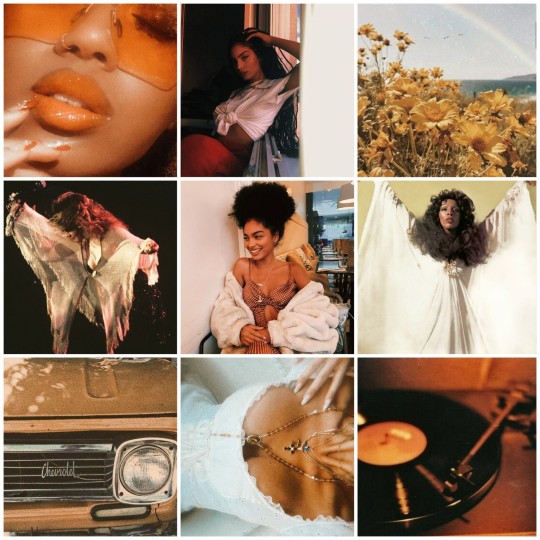
The year is 1978, 22yr old Rhaena Targaryen, is a singer/songwriter on tour in the States with her band Black Star. A folksy/bluesy rock band with music that rushes waves of ecstasy and ethereal beauty over whatever size crowd they play for. Rhaena graces the stage with all the grace and majesty of a fairy Princess or a glorious Goddess-like enchantress. Silver tresses and colourful flowing cape-like gowns that twirl and spiral with her every move, her sleeves hang like wings and flow as such as she spins and glides across the stage. She's known for losing herself in her music, as if she leaves her body on the stage and ascends to a higher place, her voice hypnotizing and mesmerizing her audience.
She's a marvel.
She's unreal.
A must see live.
With songs that spoke of mythical tales, dragons and burning lands, magic and royalty. And yet the song that was topping the charts recently was about a tortured lover, a dark figure who could not be shaken no matter how hard she tried. It was a song that left her screaming soaring notes out into the air, with so much anguish and internal rot, her rasping notes playing on par with the ripping final guitar solo.
And yet, the effervescent Rhaena Targaryen was not romantically tied to anyone, as far as the public knew.
They couldn't place the man she spoke of, but her emotional tale still ripped at the audience just right, connecting the feeling and the emotion...an unrequited love gone wrong.
An aggressively beautiful voice paired with the perfect music backing her. With a band that consisted with her as their lead vocalist, her twin sister Baela as both vocals and their lead guitarist, their half-sister Aemma as the keyboardist as well providing backing vocals with her other half-sister Aerea their bassist. Rounding out the band were Rhaena's two cousins, Aegon as their drummer and Daeron as their 2nd guitarist.
Black Star as a band and their music, was a growing sensation. So much so that Rolling Stones magazine had sent their very best writer to cover them, someone who reluctantly knew the genre well...knew the band even better...and after analyzing the lyrics, was quite certain he knew who that popular song was really about...
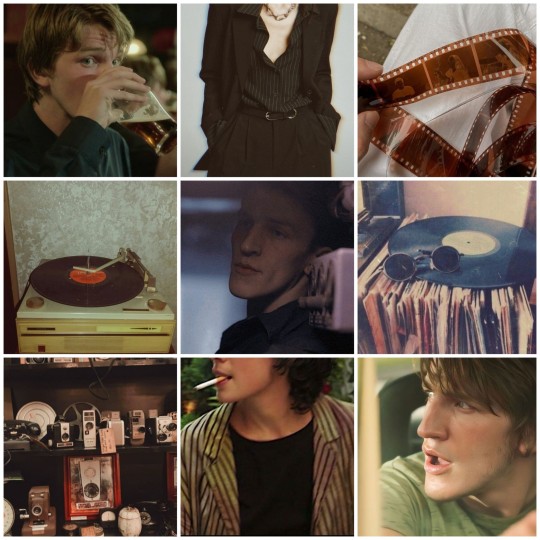
In 1978, 24yr old Aemond Targaryen, had worked his way up the writers ranks at Rolling Stones magazine. He'd always been an avid lover of music and culture, and while he could hold his own decently enough on guitar, it was more of a private activity as opposed to a career path. No, his talents lay on the written page, with his added photography skills. In his time at Rolling Stones he'd had the opportunity to interview some of the best the 70s had to offer. From Stevie Nicks and Lindsey Buckingham from Fleetwood Mac, Ozzy Osbourne and Tony Iommi of Black Sabbath, Dio, Buck Dharma of Blue Öyster Cult and even Donna Summer.
He'd worked his way from covering lower up and coming musicians and bands to meeting some of the greats. So it was to his surprise and slight disappointment when his chief editor slapped down a newspaper on his desk that read in bold letters "Black Star Shooting All The Way To The Top" and asked him to immediately jump on the task.
Maybe it was because he hadn't heard that band name in years...ignored it purposely for 4 years to be exact. Maybe it was because the moment his brothers had told him they were moving to Germany to "solidify their sound-" he stopped listening all together. Burning at the fact that his pretty little cousin...the one woman he wanted to stay within his orbit...was moving across the world to a whole nother continent, let alone country, just to get away from him.
Possibly it was because Aemond had been the one who fucked all it up to begin with. He'd been an idiot then, told her he loved in a letter...only for her to drive up just to see him making up with his on again off again girlfriend, Alys Rivers.
Rhaena had never let him explain, she wouldn't hear a word of the truth, the fact that Alys had practically lunged onto him, kissed like it would be forever. Only to turn around and dump him the week afterwards, Alys had said it was because "his heart wasn't in it", and truthfully it never was...
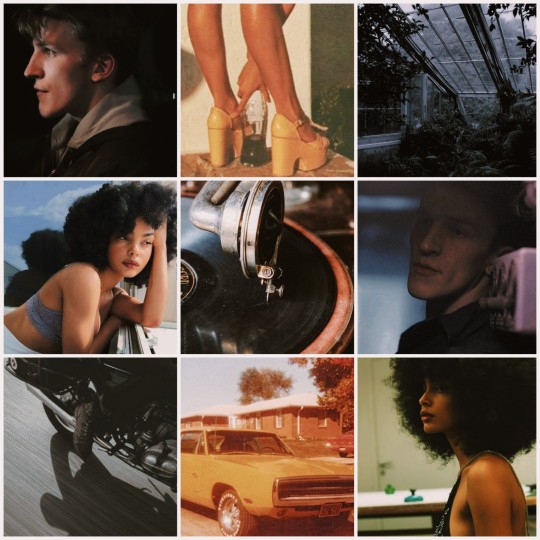
Only, Rhaena was back. And now there was a song playing on the radio, one that seared through him as it practically detailed the whole of their backforth relationship. There were technically three songs about him to be exact, although the other two seemed far more covert in their delivery. And now he was being forced to follow her...and the band…on their tour for their final 3 shows. Rolling Stones wanted it all, close and personal candid shots, interviews with the whole band, but most importantly he was meant to shine a light on their mysterious enchanting lead singer. To have her decode the songs and lyrics on their latest record.
If Aemond could look past the bitter sting of regret and the annoyance of how fate seemed to be weaving his life around. Then maybe he could see this for what it was, an opportunity to win her back...just maybe…
#aemond x rhaena#rhaena x aemond#hotd fic#hotd fanfic#aemond targaryen#rhaena targaryen#rhaemond#modern au Rhaemond#i have absolutely NO idea when I'll actually start writing this 😂😂#but i really dig the concept#so hopefully this rather long synopsis is good enough for now 😂😂#i also couldn't narrow myself down to 1 or 2 mood boards SO i used 3 😂#like i haven't entirely nailed down the character looks i want for this one?#like do they have regular Targaryen/Valyrian features in this?#do they have regular hair colours and 70s era hairstyles?#many questions 😂😂
51 notes
·
View notes
Text
SOPHIE ELLIS-BEXTOR - "MURDER ON THE DANCEFLOOR" (2001) (2024)
youtube
23 years on and this groove's still got some life in it...
[7.11]
Thomas Inskeep: Sophie Ellis-Bextor should've been the next Kylie — and for a couple years, almost was. Her 2001 debut album Read My Lips spun off a trio of top 3 singles in the UK, including this one, which has over time become her true classic. Dua Lipa's entire career was birthed in this single, the dictionary definition of ebullient dance-pop. (It's fitting that Lipa's "Houdini" is currently the most-played song on UK radio as this single is re-ascendant.) SEB has never gone anywhere: she's still making music, touring (based on her 2022 Sophie Ellis-Bextor's Kitchen Disco (Live at the London Palladium), she still sounds great), and is now a DJ on BBC Radio 2. She just didn't become the massive pop star she deserved to be. Now, thanks to its placement in a climactic scene in Saltburn, her greatest single is getting its flowers, climbing back up to #2 in the UK (so far — my fingers are crossed it can make it that final notch higher). "Dancefloor" still sounds fresh, certainly fresher than the glut of '90s-sampling dance-pop dominating the UK charts. This single sparkles, SEB giving a knowing wink as she sings, especially on the line "gonna burn this goddamn house right down." She knows what she's doing here: making magic. [10]
Edward Okulicz: I bought this on single back in 2002, which tells you something (other than that I am old): it was an irresistible bit of sparkly disco radio pop back in the day. Move it forward or backwards a few years and it might have been an indie rock song for someone else, a filter house record, or (gulp) a Ronan Keating record. Fortunately that never occurred, and it's a delight to see a classic gain new fans from age groups and territories that didn't get it on saturation rotation. Part of it's the solid song by Gregg Alexander, who at his best was a master craftsman of a much-maligned form. Another part of it's the much nimbler, slinky production compared to the rest of his soft-rock oeuvre. And a very, very large part of it is the Debbie-Harry-but-English pose of Ellis-Bextor, too cool to do anything but be filmed dancing from the waist up while she stomps her heel into your eardrums. "Murder" really has everything — a catchy chorus, the tinniest guitar solo ever, hooks that fall as much off the words as the melody — and so is perfect for every occasion, even a movie I am never, ever going to see. [10]
Alfred Soto: Like the Pet Shop Boys' "Rent," waaayyyy too good for Saltburn — perhaps Emerald Fennell thought their incandescence would rub off on her as if it were glitter. Part of a vanished climate of French house-inspired crossover pop like Kylie Minogue's "Love at First Sight," Sophie Ellis-Bextor presages Katy B's regular-person anonymity: she surveys the strings and rhythm guitar licks like a party hostess keeping an eye on the band while sipping her prosecco. [8]
Alex Clifton: I haven't seen Saltburn and frankly have no interest in it, but this film has led to the Sophie Ellis-Bextor renaissance which is a net good for society. "Murder on the Dancefloor" is just brilliantly composed and produced; it feels as fresh today as it did twenty years ago. There are so many thrilling little moments from Ellis-Bextor's vocal delivery: the way her voice curves into "about your kiiiiiind," the little rasp in "there may be others," the little trill of "dancefloor" in the bridge. I feel so biased writing this review because I've literally been listening to this song since I was a kid, but I'm so jazzed about "Murder" finally receiving the love it deserves. [10]
Ian Mathers: How can you not love pop music when it'll randomly do things like this, suddenly giving us a song to review from before the earliest days of the Jukebox, that is here purely because of its use in a movie that I have not seen but am informed was probably picked on the basis of Ellis-Bextor's plot arc in the music video. And if I'm not willing to go to bat for it quite as hard as I would for "Running Up That Hill," I did love "Murder on the Dancefloor" in 2001 and it still sounds great now. I don't find myself having any reaction more complicated than happiness at hearing it again and that particular joy of people liking something you like. [8]
Nortey Dowuona: If you told me this came out in 2021 and Emerald Fennell asked Sophie to use it in her movie set in 2001 because it was just that on point in depicting the time, I would agree. Then after taking out my phone, I'd be punched in the face and meekly give up my phone. Then, after watching you sprint into a nightclub, I'd immediately thank goodness you didn't ask for the passcode and run like hell for the closest subway. I am three stops from home before I remember this did not actually come out in 2021; there are other Sophie Ellis-Bextor songs and jailbreaking is a thing now. [10]
Leah Isobel: RIP Mark Fisher. You would've written a hell of a blog post about Saltburn. [7]
Mark Sinker: Necessary digression 1: heraldry as a science in Europe is roughly 900 years old, a bright and stylised easy-read guide, highly rule-bound and policed, to class and land and title — which is to say to material history (its jargon-field is still mostly words not otherwise used in the UK since the 14th century; even property law is less lousy with extinct Norman French terms). And like many very aged things, it has necessarily also passed through phases and fashions, as technologies of display arrive and depart. In fact the first inkling I had that I wasn’t going to get on with Saltburn was the typeface chosen for the title on-screen at the outset. It’s a font with a fairly specific ill-set ungainliness to it: it wants to have the weight of "pleasingly and weirdly old; not how we do things now," but it might just as well be some off-the-peg super-modern studio confection — or even (though I slightly doubt this) something custom-fashioned purely for the film. There’s no discernible care to the choice. Necessary digression 2: back in the late '70s when Peter Saville was busily and insouciantly borrowing from this or that actual-real document or design, of such-and-such era, part of the point was the severity of the decontextualisation — except there was a rigour to the carelessness. The item was being supplied with an iconicity (the very word) pulling you in towards whatever the item was that Factory Records was then placing on the market. The surface glamour of the original was to be funneled through in such a way that its weight amplified only the new relationship. In fact (in its stylised easy-read way) Saville’s work was ruthlessly the opposite of heraldry, so very good at managing the ambient melancholy that suffuses the wider Factory moment; all the blocks and counterspells necessary to conjure here beyond the end of creative time as the context for the music to have presence. Anyway, long story short (lol) Saltburn – which would love to believe it has accessed the aura, for example, of the cover of New Order’s Technique — is attempting to juggle the same double burden. It wants to conjure a play between the decontextualised pull of 24-hour-party-people hedonism and the real ineluctable unremovable weight of actual history and actual class and actual land and actual title. Except for its story to work it needs both dimensions (hedonism and weight; heraldry and careless scribble) to register, as Saville absolutely didn’t. No block, no counterspells, nothing to dampen the disturbances — so when poor old Sophie EB’s voice and poise are scalpeled out of their 20-year-old chart context and abruptly c/p-ed into whichever late-stage scene it is, well, here they are, as a clumsy synopsis (calculation, side-eye, dancing, death) the structure really shouldn’t require, in a role the song is the wrong mood (a faintly gauche trifle, a chirpy hustle) to deliver. The movie never works out where it gets its deep reveal from, or what shape its politics are (if politics is even a useful word here). Ill-set ungainliness all over again: the carelessness floods back into the borrowed adornment, and breaks it in pieces. I don’t even love this song that much but I hate how it gets what value it has so gracelessly driven out of it. [2]
Jacob Satter: At the risk of killing the groove, this is a pretty boring choice for a manufactured revival track. Call me back when the kids discover "It's In Our Hands." [4]
Jacob Sujin Kuppermann: I'm glad everyone's having fun here but the more I try to enjoy this — either on its own terms or as an icon of nostalgia — I get nothing. Unremarkable in any year. [4]
Lauren Gilbert: It was a [10] in 2001, it's still a [10] now. [10]
Katherine St. Asaph: The thing about it being 2024 is that in the intervening 20-plus years since "Murder on the Dancefloor" came out, approximately ninety million more disco-revival tracks came out. Some of them are by Sophie Ellis-Bextor, even. And so many of those tracks are smooth where this is stiff, magisterial where this is timid (and not in a winsome Katy B kind of way; Katy got better arrangements), charged where this is inert and just generally unmurderous. It's actually startling how inessential this sounds by comparison. [3]
Oliver Maier: Even as a youth, before my brain was burdened with indulgent critical vocabulary, I felt like this song just didn't work. I can't pin down whether "Murder" is knowingly a little chintzy (dare I say camp?) or if it's just cheap tat trying sincerely to sound boutique. Benefit of the doubt granted or not, Ellis-Bextor sounds like she's doing karaoke off the sofa. [4]
Michael Hong: When Ellis-Bextor pauses, it's easy, like a quick and graceful end to a conversation rather than the expectant response to her more spirited word choice. She's committed to this casualness, easily slipping away at the hint of a faux pas, which makes the occasional lingering word more charming. "About your kind," she sings, as if looking you up and down, wondering if she's got it wrong this time; the word "others" is trailed as if she's daring you to eliminate the competition. In that way, "you better not kill the groove," delivered with such nonchalance, becomes a fervid instruction. [7]
Will Adams: It's cute, Sophie is ever-charming, but there's real problem when you've got songs in your catalog with titles like "Bittersweet" and "Heartbreak Make Me a Dancer" that offer way more palpable drama than the one with the word "Murder." [5]
Joshua Minsoo Kim: Every other line is threatening here. “Stay another song,” “Don’t think you’ll get away,” “You better not kill the groove.” Sophie Ellis-Bextor isn’t demanding fear, though. That’s what makes “Murder on the Dancefloor” so irresistible: she sounds like a friend, albeit one who’s deathly serious about having a good time. When you hear her, you believe it can be this good for you too. [8]
Taylor Alatorre: Wow. They were allowed to make these slick disco-pop reimaginings with actual guitar solos back then? We must retvrn. [8]
Tara Hillegeist: It feels like a time capsule from another era in pop music entirely, because it is. There was a time when Ellis-Bextor's stately, imperial, nigh-inhuman precision of a delivery felt like nothing so much as the edifice within which pop star royalty could be crowned, particularly in the world of UK pop; it's still hard, even now, to deny the simple pleasures of someone who knows what her job is and then executes it flawlessly. But it's been over two decades since this song originally bowed, and it must be said that it was the impact of songs like, yes, "Murder" itself that raised pop music's skill floor high enough that such icy professionalism now feels like the most tiresome part of it — Dua Lipa does this regularly, after all, and with equal anonymity. No, what saves it, and ensures the song remains nothing so much as a delightful diversion (conditions of its resurgence be damned, I say), are the sampled whoops that come in beneath the guitar solo; notwithstanding that such a slice of controlled disco can credit itself with having a guitar solo to begin with, but the canned hype is such a stupendously goofy touch. It humanizes the song instantly, stripping the archness of its artifice aside to reveal the awkward smile underneath. The moment passes, of course. But the smile lingers. [7]
Anna Katrina Lockwood: I've been waiting 20+ years for an opportunity to issue a dissertation on the songwriting genius of Gregg Alexander and by god am I ready. Though it's hard to imagine it in a different form, "Murder on the Dancefloor" was apparently a cast-off single for Alexander's New Radicals debut, replaced by the equally glorious "You Get What You Give" — like, imagine being such a talented songwriter that you can just cast off a song like this, knowing you've got an equally great one to replace it with! "Murder on the Dancefloor" is just perfection in Ellis-Bextor's hands, with a galaxy of terrific choices in its production to go along with the amazing melodic structure. I still can't help but burst out laughing at the initial vocal hit in the intro on occasion, a perfect, delicately harmonized coo of "Murder!," cutting through the disco instrumental setup occurring all around. It's as great a moment of pop songwriting as I'm aware of — setting the expectation of the song's vibe from the outset. Ellis-Bextor's lyrics are outstanding, cleverly arch but not too shiny, in the thick of it yet also gliding past suavely. The song is incredibly detailed, a carefully calibrated piece — it lopes by with a relaxed stride rather than a reckless dash, a well-tailored Savile Row suit as opposed to an H&M tunic, cut to the millimeter. Yet it's also very clearly of the disco, built for singing along, difficult to avoid dancing to when it comes on. It turns on its heel at moments' notice, with layers of melody playing off each other throughout. Matt Rowe's efforts in production also deserve notice — this song sounds great, so distinctive that it is still eminently listenable 23 years on. I honestly have not a single thing to criticize about "Murder on the Dancefloor," and it's been a long time that I've considered it to be one of the truly great pop songs of my lifetime. It feels like incredibly just desserts to see it garnering so much praise now. [10]
[Read, comment and vote on The Singles Jukebox ]
#sophie ellis-bextor#saltburn#music#pop#pop music#music writing#music reviews#music criticism#the singles jukebox#Youtube
7 notes
·
View notes
Note
BPP I have been thoroughly wrecked by Yoongi. HIS VOICE? HIS CHARISMA??
My god. He's been your bias since debut?! You're strong woman. How did you do it?? One concert and I'm ready to bear kids for him. 😭😭😭😭😭😭😭
/gen
*
Ask 2: I'm sorry!!! But look at this!!!! twitter com/sujimschim/status/1652517741226790913 looolll I think army's gonna be okay (pun intended lol) Sorry I think I'm having a post wlive high right now. lol Also did you hear about that insanely lucky army who got Yoongi video on their phone AND got to sit next to Jimin during the concert?! Like WOW. I'm amazed. Isn't that harder than the lottery?? lol Ok I'll really stop. Have a good night!!
*
Ask 3: A TO THE G TO THE U TO THE STD
*
Ask 4: Yoongi looks SO GOOD IN WHITE T WALKING DOWN THE HALLWAYYYYYYSSSSSS?!@#@!K?!@! THANK YOU JIMIN FOR SCOLDING YOOOONNNNGGGGIIIIII!!!!!!!!!
*
Ask 5: I love how Yoongi sticks to his first iteration of Sorry for being cute choreo. That choreo is becoming a lore of its own. yoominforlife lol Also OMGGGG his concert haegeum performance is gonna be LIT. I personally really love the name of the song and all the word play that's hidden inside it
*
Ask 6: i want to fuck yoongi till the paint peels off the walls i need to suck his thick fat cock clean empty, gobble his midas balls till i gag and after that read him my deontological critique of neitzche's assertion that god is dead. because god is well and truly alive and i just sucked his balls dry. i was lost and stupid in the wilderness of my ignorance of his divine hotness. i doubted your mind for your esteemed love for him. i was foolish but he has made me a believer. i want to be shoooshed by yoongi. then fuck him till he blacks out. consensually.
sorry. pls don't hate me bpp yoongi just drives me so fucking insane.
*
Ask 7: D-Day tour setlist is INSANE. Banger after friggin baanger Bpp! Have you tried to rank Suga's songs before? All his solo songs too can you rank them Bpp?
***
Hi Anon(s),
Anon in ask 2, your link. And yeah, that person was super lucky. 💜
I need to confess to y’all. I caved and got myself an earlier ticket. Usually, I buy my tickets for later in the tour to give myself time to calm down and adjust. I’d have spoiled the setlist for myself, listened to it ad infinitum till the lyrics were ingrained and my hormones were in equilibrium. But this time I couldn’t wait till the Cali dates, (still going). I had to see Yoongi tonight.
And Christ, I have ascended.
I know I will not be coherent, I’m already trying to self censor as I write , but I want to get this out here because many of you have sent me asks about him, some I know I can’t post ever, so I’m hoping someone else gets it whatever it is I’m tying to say.
…
Yoongi is so beautiful.
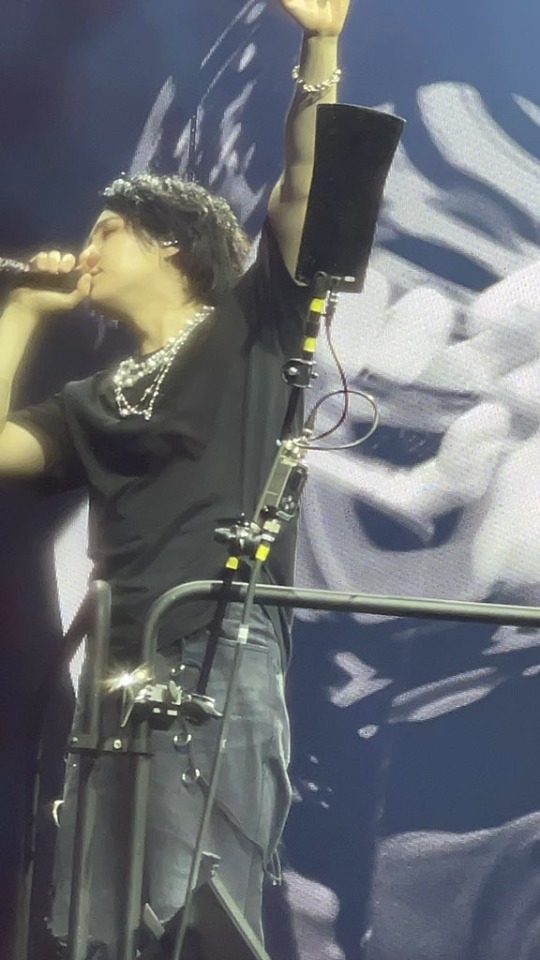
Yoongi is a rock star, and I mean that in a literal sense. He makes rock music, thinks like a rock star, and sings like a rock star. His live renditions of Amygdala are the perfect example of this. Pairing screamo rock in the chorus with the guitar solos in the outro, everything about Yoongi's vision for that song is centered around liberation, a value that's inherent to a rock star.
*
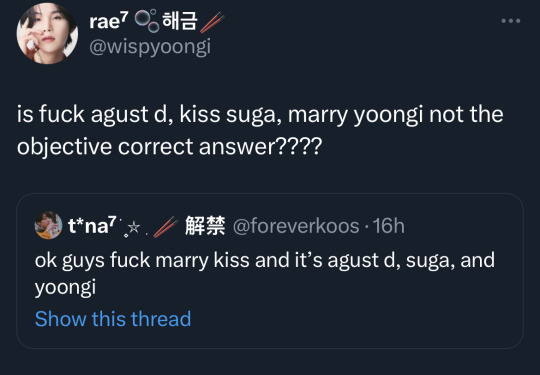
(Yes. That’s the objective correct answer.)
I laughed reading all your asks btw. (Anon in ask 6, I see you, I get you, and I don't judge you.) Ranking Agust D's songs is impossible for me. My personal taste is screamo rock and dirty trap or drill, I like songs with distinct percussion, lots of guitars, and/or distortion, voice cracks, autotune, etc. Artists like Nirvana, ONE OK ROCK, Kendrick Lamar, Twenty One Pilots, and Jimin give me bits and pieces of that sound, but no one in BTS knows how to scratch that itch for me better than Yoongi.
He’s just the right kind of insane to speak my language.
The duality that shimmers around Jimin like a mirage and is central to his magnetism, where you can’t be sure of who, what, exactly you’re looking at - man, woman, child, king, snake, panther, cat, metal, silk, fire, ice - all in one. That duality, lives in Yoongi’s music.
It’s elsewhere too, but it lives in his music. Even underneath all of that, he just makes some of the best music around.
That beat change at the end of Shadow? That's music tailor-made for me. Cypher Pt 3, AGUST D (the song), What Do You Think?, Trivia: Seesaw, the live performances of HUH?! and Amygdala are a revelation. All his music sounds perfectly made for me.
I honestly have no choice but to love him.

(I have no words when it comes to Yoongi.)
I won’t exactly rank his music here. I’ll discuss some of my favourites based on things like production, message, flow, feel, etc. Maybe.
Production
724148
This song is criminally underrated. I mean it's a crime more people aren't screaming from the rooftops about how crisp this track is. Listening to 724148 was the first time it really hit me how brilliant Yoongi is as a producer.
So Far Away ft Suran
You need to listen to this song on good speakers. It will change your life for the better. Do that, then come back here and tell me how you feel.
Burn It ft MAX
You know, when I heard the live performance of this song, I called a friend to help me re-calibrate my speakers. To recreate that feel. The production on the song is insane. Not to mention Yoongi's flow in the second verse.
Amygdala
The guitars are placed and layered perfectly. I love how forward the drums are in the mix. The autotune is one of my favourite things about it too. The entire song is perfect.
Daechwita
Am I the only person who hears the same static in the song intro that continues faintly in the foreground for the entirety of the song? As though you're entering a glitch. It's so sick. The main/central beat doesn't vary much, all the texture comes from Yoongi's adlibs. And he does an excellent job elevating it to something more.
*

(It truly embarrasses me that I cannot allow myself to talk about him. He’s that… much.)
Flow / Delivery
You've all seen me go on and on about Jimin's vocals. About how much Jimin's voice is the catalyst for ecstasy when I listen to BTS's music. But Yoongi's voice affects me just as strongly, if not more, in a very different way.
I’m a sucker for the kitten. That insane high pitched thing he does drives me to the limits of my sanity. But he’s also a natural baritone. A nasty one at that. You can hear it in the music he makes. And that’s my kryptonite.
Have you listened to HUH?! Like, really listened to it? Do you hear his flow from 1:08 - 1:15?
youtube
Do you hear how disgusting this brat is?
Fuck.
Let’s just move on.
Some favourites where his flow, delivery, switch-ups, is frankly ridiculous:
Shadow
Burn It ft. MAX
AGUST D
HUH?! ft j-hope
Cypher Pt. 3
Aside, the instrumental of this track, along with Cypher Pt. 4, Dionysus trap remix, Danger MMA 2019 version, and We Are Bulletproof Eternal, is incredible.
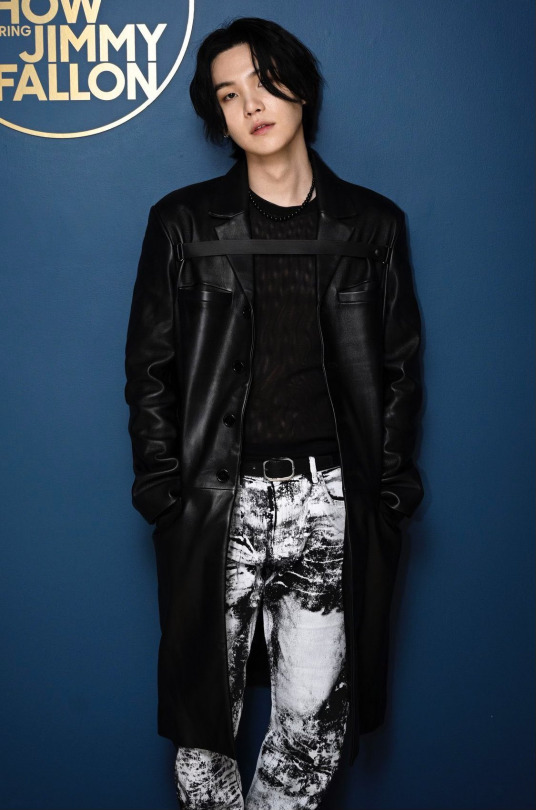
*
Feel
Honsool
Making a list based on pure vibes, Honsool has to show up. Yoongi captured the unmoored, untethered feeling of drifting through haze, distilled and crystalized into Honsool. Genius.
Give It To Me
What Do You Think?
HUH ft j-hope
Tony Montana ft. Jimin
I'm a sucker for the grit in their voices in this song. The live version specifically.
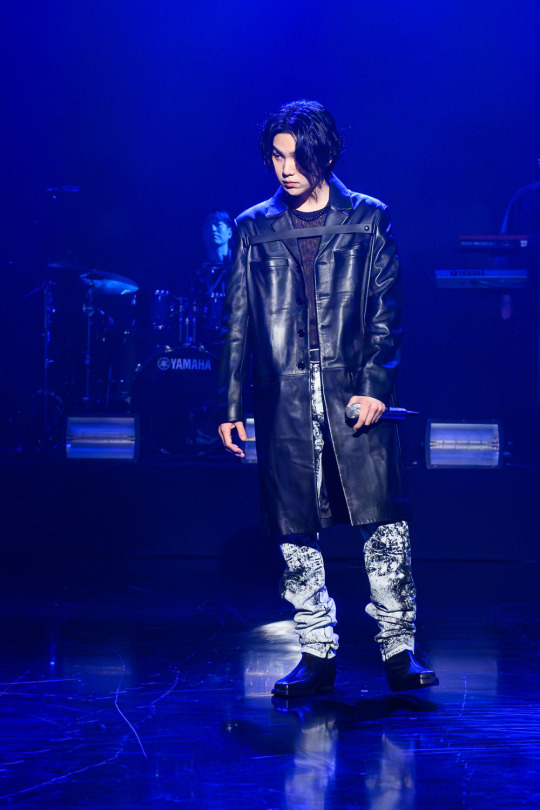
(He’s such a problem for me y’all…)
*
Not to get into this, but he also does sweet, poppy songs too. Some faves being That That, Amygdala, People, Trivia: Seesaw…
He is a true artist.
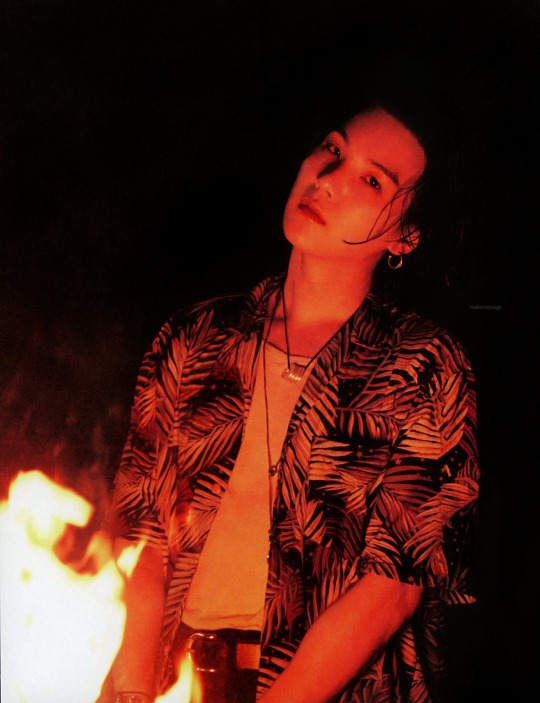
And nothing is hotter than that.
*
Message
I started writing this long paragraph about the themes in his music and stopped because I’ve really gone on long enough. I’m barely keeping it together here. I just saw him lose his mind with happiness at the ARMY who disguised her iPhone as a Samsung. That wide smile on his face is still replaying in my head. I’m happy he’s happy, because he’s made me so happy.
Anyway, some fave tracks I reach for, for their message:
5 - Strange ft RM
4 - UGH
3 - Snooze ft Ryuichi Sakamoto & Woosung
2 - Amygdala
1 - People
In a class of its own, I have to mention The Last. That song is a reckoning and wake up call. It's everything and I'm forever proud of Yoongi for making it.
*
Have y’all imagined what the concert will be like in 2026? Have you really sat down to think about what it could look like? Because I have. And it looks like pure bliss. No matter what is happening in the world at that time, I must see BTS.
It’s a decision I made last June, but Yoongi on this tour has breathed fire into that desire. He’s made me want him, crave his sound, daydream of his music playing in my head…
If I could I would’ve sued this man already.
Anyway, Anon in ask 1, welcome to getting wrecked by Yoongi. He is layer upon delightful layer of loyal, creative, tortured beautiful genius hovering just on the edge of insanity. I’m hopeful that he completes his tour as planned, enlists as planned, serves as planned, and is discharged and back to BTS as planned.
In the meantime, I’ll fully enjoy the time he’s spending with us and the music he’s making for us. I’m happy y’all are joining me in this too. 💜
#yoongi#min Yoongi#Agust d#Suga#BTS#d day#d day tour#And fuck Hybe with their fuckass dynamic pricing
28 notes
·
View notes
Text
My 1st Impression Thoughts on The Lamb Lies Down on Broadway: Incredibly Weird and Weirdly Incredible
TW: mentions of death, male genitalia, castration, sexuality
Well, that was certainly one of the experiences of all time! If you’re unfamiliar, The Lamb Lies Down on Broadway is a rock opera by Genesis, released in 1974. The line-up consisted of Peter Gabriel (lead vocals, flute), Tony Banks (piano, keys), Steve Hackett (guitars), Mike Rutherford (bass, guitars), and Phil Collins (drums and vocals). It was the final album of this line-up before Gabriel left to form a solo career, and this was also primarily Gabriel’s project. I have a whole list of my first reactions that I took down as notes as I was listening to the album, if anyone’s interested, by the way!
The plot is not exactly simple, per se, and everything about this album seems slightly confusing: Rael is introduced as a tough city kid living in New York City, with the opening song depicting him walking down Broadway. He then encounters a lamb lying down on Broadway, and shortly after sees a “wall of death” approaching him, after which is thrown into another world, awakening in a cocoon. He goes back to sleep, and awakes again in a stalactite/stalagmite cage, in which he sees his brother, John, standing outside the cage, and then receives visions of other people interconnected in cages like his. He then awakes to “The Great Parade of Lifeless Packaging”, which appears to be some otherworldly company responsible for making people and maintaining some universal cosmic balance. The next part of the plot is unclear on whether he actually goes back to NYC, or simply receives visions of his life, but it describes his life in NYC outside this other realm, in which he describes himself as being tough and a criminal. He also receives a vision of him trying to make a move on a woman, using a manual he bought in the song “Counting Out Time”. Needless to say, Rael fails, and somehow he ends up in the area of the “Carpet Crawlers”, which he has to move past. After passing the carpet crawlers, he encounters some sort of banquet and a spiral staircase, which he ascends into a chamber with 32 doors, and encounters a pale, blind woman (“Lilywhite Lilith”), who offers to help him out.
“Lilywhite Lilith” does indeed lead him out, however takes him to see the “Supernatural Anesthetist”, aka Death. After his encounter with Death, he notices a smell which leads him to meet the Lamia, which are snakes with the heads and breasts of women. These snakes mate with Rael, and then they die. When they die, Rael decides to fuckin eat them, for some reason. I don’t know man, I didn’t write this album. Anyway, after consuming the Lamia, he finds the colony of Slippermen, which have all been deformed due to their encounters with the Lamia. Rael also finds his brother John there, and they visit Doktor Dyper to treat the source of their illness: their genitals. In order to treat this, Doktor Dyper must castrate them.
Yeah.
Before this, I thought the weirdest plot line in all of prog was “Hemispheres”, but at least no one gets fuckin castrated in “Hemispheres”. Digression aside, they are given their members in a tube, which a raven promptly steals from Rael. Rael implores his brother to help him catch his phallus in a tube (honestly, this whole thing feels like a Greek myth), and upon chasing after the raven, ends up on an embankment, overlooking a ravine. He notices a way out of this other world, but the portal is slowly closing, and then he sees what appears to be his brother drowning in the ravine. He goes after his brother, risking staying in this other world instead of returning to New York, and upon rescuing his brother, it is revealed that it was not his brother at all, but rather a reflection of himself. The album basically ends on this note.
Did you get all that? Yeah, me neither. The whole album feels like some unholy mix of a r/NoSleep story and The Who’s Tommy. It’s incredible, it’s weird, and it’s definitely incredibly weird. It’s definitely a Level Three Concept Album, and a bizarre one at that. Now, of course, this begs the question: what does all this mean?
To be honest, I’m not sure if there’s just one answer to that, or if there is an answer at all. To me, Rael is not meant to represent reality at all: he’s meant to represent illusion and fantasy, and the world he finds himself in is reflective of that. His brother, John, who leaves and reappears several times, is actually supposed to represent reality. John’s transformation into Rael at the end is meant to show how often reality and fiction blur, and how one can be trapped inside the subconscious. None of the places that Rael visits, including Broadway, are “real”. Broadway itself is home to actors, which intentionally blurs the lines of reality, “The Grand Parade of Lifeless Packaging” represents how people are shaped by external forces, the “Carpet Crawlers” sequence is some kind of critique of religion, “The Lamia” sequence has to do with sexual fantasy, whereas “The Colony of the Slipperman” is the consequences of that sexual fantasy, and the castration sequence is symbolic of repressing one’s desires in favor of maturity.
However, that’s just my interpretation of it from listening to it for the first time, and I think the biggest part of the Lamb is that it can really be interpreted anyway you’d like. I don’t think it has a set meaning, except for the various transformations that Rael and the other characters undergo. Rael’s journey can be symbolic of a struggle with mental illness, or even a trans allegory. As stated in the liner notes, “This lamb has nothing to with Rael, or any other lamb— it just lies down on Broadway.” This could suggest that all the symbolism present isn’t really symbolic of anything at all except whatever the listener thinks it means, and to me, that’s part of its charm.
Now, onto the music! I won’t spend too much time on this, because I was primarily focusing on the lyrics on my first listen, but I was blown away by the musicianship on my first listen. To be honest, I’m guilty of underestimating Genesis when it comes to musicianship, but I certainly won’t be doing that anymore! I was particularly surprised by Banks’ keyboard and piano playing— I often saw him listed in the likes of Emerson and Wakeman, but I never really understood why until now. Furthermore, I was really impressed by Genesis’ ability to play in weird time signatures, but still make it “groove”, which is something that a lot of other major prog bands have a problem doing. I also actually enjoyed the short soundscapes before some of the songs, because I thought they helped set the mood. The transitions on this album were very smooth as well.
Overall, I have to give it a couple more listens, but this might be my favorite rock opera of all time. It’s at least an 8/10 from my first listen alone. I’m absolutely fascinated by the plot, and I’ll hopefully do a proper analysis or two at some point!
#genesis band#the lamb lies down on broadway#prog rock#progressive rock#prog#tw: death mention#tw: castration#essay#first impression review
11 notes
·
View notes
Text

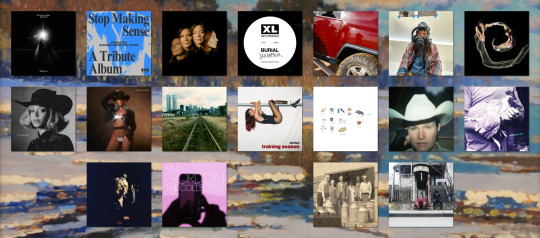
so many great singles dropped this month!! 2024 is shaping up to be a rlly exciting year for music. plenty of interesting projects are coming within the next few months and the singles accompanying them have me setting my hopes super high. here are my thoughts on some of the most notable singles & songs from the month!!! to check out my thoughts on some of the albums, EPs, and mixtapes that came out this month click here!!! since three noteworthy artists dropped singles like right after i posted this i made an add-on post here!! also feel free to follow me on rate your music and twitter <3
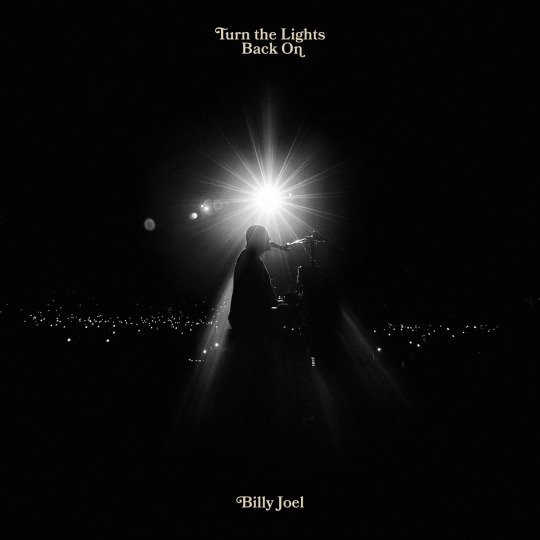
"Turn the Lights Back On" - Billy Joel
◇ genres: piano rock, singer-songwriter
The way they hyped up Billy Joel's performance of his first single in over 30 years at the Grammy awards earlier this month ironically described why I'm not crazy about the track. The way it was framed in the video, and how I perceive the situation given the song itself, was that Freddy Wexler consistently pushed Joel to get back into the studio until finally Joel conceded. It was played up for laughs, but this song really does sound like a "please, will you get off my back" kind of thing. I don't know, it's fine. I feel like an asshole pooh poohing on a new single from Billy Joel, but it just feels so unnecessary. I doubt this will lead into a full album. Likely, the Piano Man will continue to sell out Madison Square Garden multiple times a year and play the songs everyone actually wants to hear. listen here: Apple Music Spotify Bandcamp (not available) SoundCloud YouTube ━━━━━━━━━━━━━━━━━━━━━━━━━━━

"Burning Down the House" - Paramore
◇ featured on Everyone’s Getting Involved: A Tribute to Talking Heads’ Stop Making Sense (not yet released) ◇ genres: new wave, pop rock
Paramore have provided the lead single for the new Stop Making Sense tribute album being headed up by A24 Music. It's a decent cover. The band can't really capture the frenetic, weird energy of the original, but that is an impossibly high task. Judging by some of the other artists involved in this project, this might be the best we get. I don't wanna be a hater because I'm hopeful this project might introduce more people to one of the greatest live albums, concert films, and bands of all time, but we shall see! listen here: Apple Music Spotify Bandcamp (not available) SoundCloud YouTube ━━━━━━━━━━━━━━━━━━━━━━━━━━━
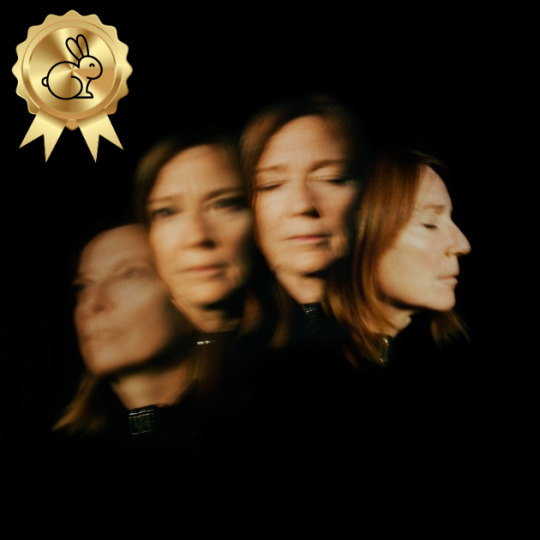
"Floating on a Moment" - Beth Gibbons
🥇 SONG OF THE MONTH
◇ featured on Lives Outgrown - Beth Gibbons (not yet released) ◇ genres: chamber folk, psychedelic folk, singer-songwriter
Beth Gibbons releasing a new solo album wasn't on my 2024 bingo card, but holy shit I'm so excited. Her feature on Kendrick Lamar's Mr. Morale & the Big Steppers nearly 2 years ago really got me excited to hear more new stuff from her and "Floating on a Moment" was exactly what I needed. This song is so good. Gibbons' voice is obviously fucking incredible, that goes without saying, but this sound suits her so well. That chorus is one of the best things I've heard this year so far. The twinkling guitars paired up with her vocals feels like you're ascending to a higher plane of existence. Not to mention that refrain at the start of the outro!!! What a lead single and what a comeback for one of the most distinct vocalists of all time. Can't wait for the full album. Ranks highly among my most anticipated albums of the year so far. listen here: Apple Music Spotify Bandcamp (not available) SoundCloud YouTube ━━━━━━━━━━━━━━━━━━━━━━━━━━━

"Dreamfear" | "Boy Sent From Above" - Burial
◇ genres: breakbeat hardcore, electro
Not entirely sure if this is an EP or a single, but I'm gonna throw it on here anyway. London electronic artist Burial is back with his first release for the XL label. 2 over 10 minute tracks that are pretty cool! My knowledge about Burial's sound isn't super expansive, I've only heard Untrue, but there's some really cool sounds here. Of the two tracks, "Boy Sent From Above" is probably my favorite. I love the more atmospheric vibe to it. The drops are really satisfying too. I'll try to revisit this again once I'm more familiar with Burial's work, but I still enjoyed these songs a good bit. listen here: Apple Music Spotify Bandcamp SoundCloud (not available) YouTube ━━━━━━━━━━━━━━━━━━━━━━━━━━━


"RiTchie Valens" | "Dizzy" - RiTchie
◇ featured on Triple Digits [112] - RiTchie (not yet released) ◇ genre: experimental hip hop
RiTchie, formerly of Injury Reserve and currently half of By Storm, has released his first two solo singles and is teasing a new upcoming project. I was a bit surprised by this because I assumed we would be getting some kind of By Storm project first after they released "Double Trio" late last year. This single is also a big change of pace compared to the tone of what they've been doing. Here, RiTchie is playful throwing out confident bars over a shimmering beat. The little "RiTchieeee, RiTchieee's" throughout the song are so silly too. The second single "Dizzy" is even better. It only dropped a couple days ago, but I can't stop listening to it. Alongside its release, RiTchie officially announced his first solo project coming in April. We're in for a real treat. listen here: "RiTchie Valens" Apple Music Spotify Bandcamp (not available) SoundCloud (not available) YouTube "Dizzy" Apple Music Spotify Bandcamp (not available) SoundCloud (not available) YouTube ━━━━━━━━━━━━━━━━━━━━━━━━━━━

"Butterfly Net" - Caroline Polachek & Weyes Blood
◇ featured on Desire, I Want to Turn Into You Everasking Edition - Caroline Polachek ◇ genres: art pop, new age
Caroline Polachek has released a deluxe edition of Desire, I Want to Turn Into You this month and it features a host of new tracks. One of them being this reworking of "Butterfly Net" featuring Weyes Blood. The original wasn't my favorite on the album, but this reworking has made me appreciate it a bit more. These two have really powerful vocals and they play off of each other very well. I haven't gotten the chance to listen to all of the new tracks from the deluxe version, but if they're as good as this then I'm excited. I also should probably revisit the whole album itself sometime soon. listen here: Apple Music Spotify Bandcamp (not available) SoundCloud YouTube ━━━━━━━━━━━━━━━━━━━━━━━━━━━
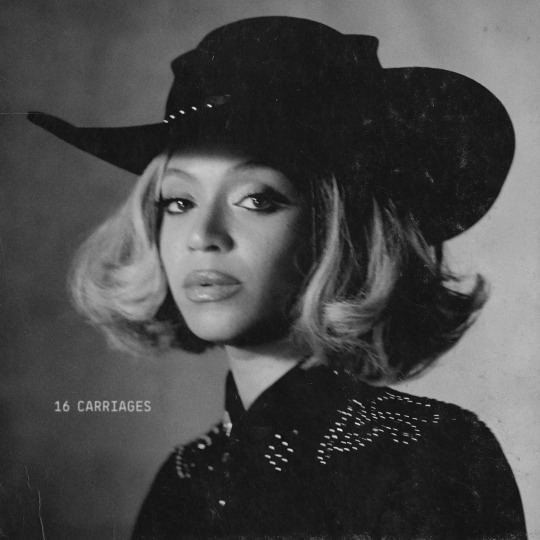

"16 Carriages" | "Texas Hold 'Em" - Beyoncé
◇ featured on Act II - Beyoncé (not yet released) ◇ genre: country pop, country soul, contemporary country
Beyoncé surprise dropped two singles during the Super Bowl and announced the follow-up to her amazing 2022 album RENAISSANCE. While that album was focused on celebrating dance and house music as well as the black and queer pioneers of those genres, Act II seems to be trying to do the same for country. "16 Carriages" is the clear highlight here and Beyoncé feels right at home with this sound. Love the way she leans into the country soul side of things and I hope we get more of that on the album. "Texas Hold 'Em" is a bit rowdier, but it's the weaker of the two. I love the instrumentation though, for both tracks actually. Perhaps the best thing about "Texas Hold 'Em" is that it finally knocked Jack Harlow's boring, uninspired "Lovin On Me" off the number 1 spot on the Billboard Hot 100. I'm hoping it'll grow on me when it's in the context of the full album. I'm super excited to see where she can take this sound. listen here: "16 Carriages" Apple Music Spotify Bandcamp (not available) SoundCloud YouTube "Texas Hold 'Em" Apple Music Spotify Bandcamp (not available) SoundCloud YouTube ━━━━━━━━━━━━━━━━━━━━━━━━━━━

"Capricorn" | "Gen-X Cops" - Vampire Weekend
◇ featured on Only God Was Above Us - Vampire Weekend (not yet released) ◇ genres: indie pop, chamber pop
I was a massive Vampire Weekend fan when I was in high school. I was listening to Modern Vampires of the City almost every day, I was obsessed. I would be lying if I said they were something I "grew out of" because these new singles really hit the spot for me. "Capricorn" sounds like a darker take on what the band was doing on a lot of Father of the Bride, leaning into some of the more psychedelic and folkier sounds. "Gen-X Cops" is more reminiscent of their earlier work, but still has a more mellow and introspective slant to it. Love the almost surf-rock sound at the start of it. Both tracks dive into themes of aging and Koenig makes some pretty poignant observations. Really excited for the new album! listen here: Apple Music Spotify Bandcamp (not available) SoundCloud YouTube ━━━━━━━━━━━━━━━━━━━━━━━━━━━

"Training Season" - Dua Lipa
◇ genres: dance-pop, disco
I loved Dua Lipa's Future Nostalgia and it even made it into my top 5 albums of 2020 (don't go back on my rym and look at the list, i'm embarrassed at my writing from that time). I was super excited about whatever Lipa would drop next and it looks as if she's building up to a new project probably sometime this year. "Training Season" follows "Houdini" and I feel the same sense of apathy for the latter that I do the former. Neither are bad by any means and the production work by Kevin Parker on these singles is stellar, but it just feels like something is missing. Lipa still sounds like a star, but these hooks just don't grab me like some of her singles from a few years ago. Again, neither "Training Season" or "Houdini" are bad songs, but I'm just having a hard time getting into them. Hopefully they grow on me in the context of a full project. listen here: Apple Music Spotify Bandcamp (not available) SoundCloud YouTube ━━━━━━━━━━━━━━━━━━━━━━━━━━━

"Saturn" - SZA
◇ featured on LANA - SZA (not yet released) ◇ genres: neo-soul, alternative r&b
I'm not up to date on the SZA lore, but when this dropped I saw people saying that it was "finally on streaming" so I guess this song has been around for a bit. I think it's the lead single for SZA's LANA album, which is a reissue of SOS ... uhhhh I don't know this is very confusing to me. What I am sure of, is that SZA can make a damn good song. "Saturn" is further proof of that. This feels like a cut from CTRL and I love it. It has this hazy, dream-like production with SZA's distinct vocal style that sounds like she's bouncing along the beat. Really great stuff. I'm still not sure what LANA is, but as long as we get some more great songs I'm not gonna complain! listen here: Apple Music Spotify Bandcamp (not available) SoundCloud YouTube ━━━━━━━━━━━━━━━━━━━━━━━━━━━
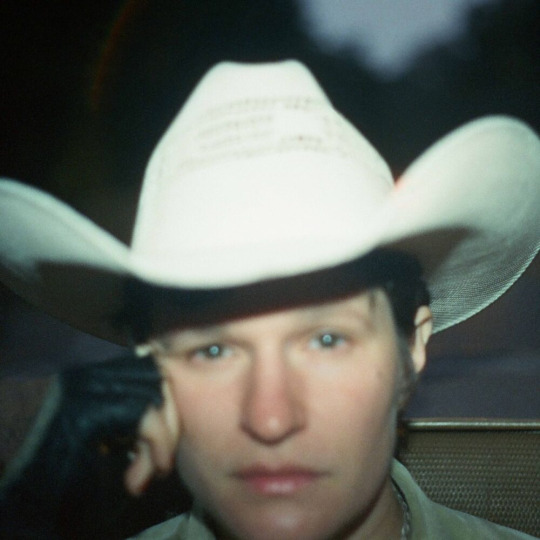
"Fool" - Adrianne Lenker
◇ featured on Bright Future - Adrianne Lenker (not yet released) ◇ genres: indie folk, singer-songwriter
Another excellent single from Adrianne Lenker ahead of her new album coming next month. "Fool" is a lot shorter and sounds a lot more upbeat than "Sadness As a Gift" from last month, but it still has Lenker's signature writing style. It feels like ever since Songs she's just on an unstoppable role. I thought the well might've run at least a little dry following Big Thief's incredible double album from two years ago, but that's quickly been proven not to be the case. I'm not sure if this new album will be better than Dragon New Warm Mountain I Believe in You, but it certainly has the potential to be Lenker's best solo project. Definitely one of my most anticipated albums of the year, can't wait to listen. listen here: Apple Music Spotify Bandcamp SoundCloud YouTube ━━━━━━━━━━━━━━━━━━━━━━━━━━━
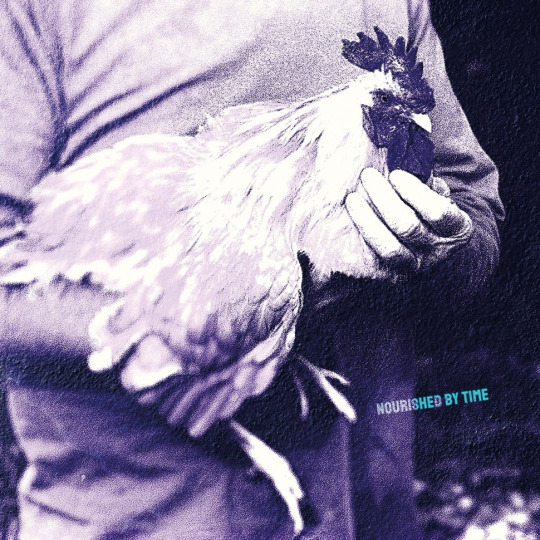
"Hand On Me" - Nourished by Time
◇ featured on Catching Chickens - Nourished by Time (not yet released) ◇ genres: chillwave, synthpop
I listened to Nourished by Time's last album Erotic Probiotic 2 in like December of last year and I was so blown away by it that it ended up almost cracking my top 10 favorite albums of the year. It seems like he's not slowing down either, announcing that he has signed to XL and dropping this new single alongside a new EP coming next month. "Hand On Me" is brilliant. Taking his unique vocal style and throwing it alongside some dreamier production is a match made in heaven. Coming off his last album, I said that Nourished by Time is an artist that you NEED to keep your eyes on and this new single proves me right! Can't wait for the new EP. listen here: Apple Music Spotify Bandcamp SoundCloud YouTube ━━━━━━━━━━━━━━━━━━━━━━━━━━━

"Life Is" - Jessica Pratt
◇ featured on Here in the Pitch - Jessica Pratt (not yet released) ◇ genres: brill building, singer-songwriter
The first time I listened to Jessica Pratt was around the time her last album Quiet Signs dropped. I ... wasn't crazy about it. Pratt's unique vocal delivery just didn't resonate with me and I just never revisited it. That was until earlier this month when I, at the behest of my partner, revisited both that album and the two that came before it. I get it now! I was wrong, she's really good! Then like a week later she teases this new single ... perfect timing. This is an interesting new direction for Pratt, sort of ditching the folk of her previous work and instead turning to brill building. The pairing of Pratt's voice and this sound are so satisfying. It's like hearing a forgotten hit from like 1965 only with a bit bit of a more modern, dreamier sound. listen here: Apple Music Spotify Bandcamp SoundCloud YouTube ━━━━━━━━━━━━━━━━━━━━━━━━━━━
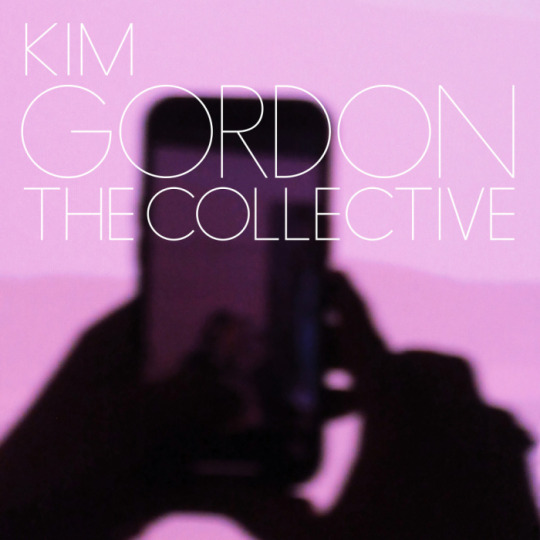
"I'm a Man" - Kim Gordon
◇ featured on The Collective - Kim Gordon (not yet released) ◇ genres: industrial hip hop, trap, noise rock, witch house
Kim Gordon's new album is coming out in a few weeks and this month she released another insane sounding single leading up to it. "I'm a Man," like the previous single, has Gordon experimenting with hip hop and trap in a surprisingly ... great way! She mixes those sounds with some noise rock which we all know Gordon fits in like a hand in a glove. The lyrics here are a bit more substantial than the other single as well. The way she sings "come on, Zeus, take my hand" is just so fucking cool. I'm so hyped for The Collective and it's so cool that an Kim Gordon is still experimenting this deep into her legendary career. listen here: Apple Music Spotify Bandcamp SoundCloud YouTube ━━━━━━━━━━━━━━━━━━━━━━━━━━━

"The Invisible Man" - Maruja
◇ genres: post-rock, post-punk, art rock
Following an amazing EP and a string of great singles in 2023, Manchester post-rock band Maruja have returned with their first release of 2024. They're in a really interesting spot right now because they've been dropping some really great stuff without having a debut album to their name. All eyes, at least in pretentious music spheres, are on them. This new single, "The Invisible Man," is certainly no different and its one of their best tracks to date. The instrumentation here is unreal, especially the saxophone parts. I'm a sucker for a post-punk band with a saxophone. Maruja are great at building tension in their songs and that's no different here. Everything just feels very anxious and when the climax finally comes it feels so earned. Their lyricism has also continued to impress me. I'm not sure if this new single means a debut album is on the way sometime this year, but I sure hope it does. listen here: Apple Music Spotify Bandcamp SoundCloud YouTube ━━━━━━━━━━━━━━━━━━━━━━━━━━━

"Doves" - Armand Hammer
◇ featured on We Buy Diabetic Test Strips - Armand Hammer ◇ genres: experimental hip hop, abstract hip hop
billy woods and Elucid have seemingly reissued their amazing album from last year with this incredible new bonus track "Doves." A slow-burning near 9-minute track featuring vocals and guitar from Benjamin Booker. The track begins with some soft guitar over this ambient noise with twinkling pianos interspersed within it. Booker's hushed vocals almost force you to pay attention to them. There isn't as much rapping on this song as you would expect, but when the verses do come in they lack the fire we've come to expect. In a good way, I might add. The noisy ambience gets harsher and harsher as we reach the end of the song. It's almost unnerving. They manage to make you feel so many emotions in just this one track. I've only had a couple days to sit with it, but "Doves" is really great. One of the most experimental tracks these guys have ever put out and it pays off. listen here: Apple Music Spotify Bandcamp SoundCloud YouTube ━━━━━━━━━━━━━━━━━━━━━━━━━━━ thanks for reading <3

#month in review#music#2024#rateyourmusic#music review#billy joel#paramore#beth gibbons#burial#ritchie#injury reserve#caroline polachek#weyes blood#beyonce#vampire weekend#dua lipa#sza#adrianne lenker#nourished by time#jessica pratt#kim gordon#maruja#armand hammer#billy woods#elucid
2 notes
·
View notes
Text
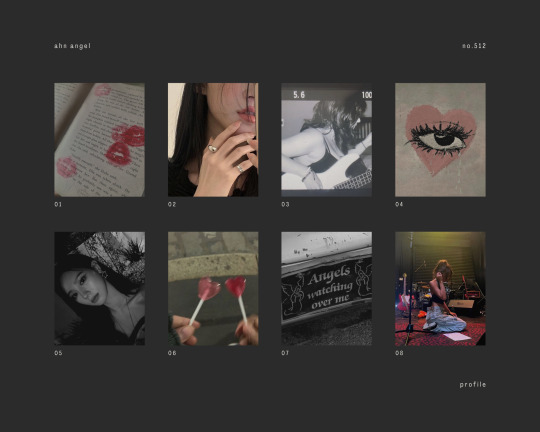
given name. -- ahn dahye | 안다혜
known as. -- ahn angel
name origins. --
ahn | 안 | 安 : a surname of chinese origins; meaning content and secure
dahye takes her last name from her father, who never felt connected to his own name. he was a wanderer, never feeling the content security his name deemed. until he met the love of his life and was given his family. dahye carries the name as a reminder of him as she struggles to find her own security in life.
da-hye | 다혜 | 多惠 : based on the hanja used; da meaning better or good, and hye meaning love
dahye’s parents named her ‘better love’ symbolizing the love they will have for her will make them want to be better as people
angel | 앤젤 : a name with english origins; meaning messenger of god
angel’s aunt helped decide her english name, deciding on angel as she saw her as a gift from god when she was unable to conceive her own children. her sweet disposition as a child only encouraged the name
date of birth. -- may 12, 1998
age. -- 25
occupation. -- kpop idol; rhythm guitarist and main vocalist of tidal
education. -- high school graduate
sexual/romantic orientation. -- heterosexual/romantic; she has considered experimenting with women before but has ultimately decided that for label’s sake she is straight
faceclaim. -- cho miyeon of (g)-idle
voicelaim(s). -- hayley williams of paramore (solo work), placeholders; sungjin of day6, younghoon of onewe, and dojoon of the rose, but i imagine her voice in tidal is more like siyeon of dreamcatcher
personality description. --
+ passionate, creative, dependable, hardworking, protective, patient
- sensitive, jealous, stubborn, resistant to change, begrudging, passive aggressive
likes. -- cats, alone time, indie rock, heart shaped things, sofia coppola movies, deep dish pizza, vanilla scent, bunnies, cherry candy
dislikes. -- change, dancing, blueberries, the sound of mic/amp feedback, summer, tarantino, driving (no license)
interests and hobbies. -- songwriting, movies (secret film nerd), journaling
talents and skills. -- guitar, dabbles in bass as well, singing, can do the ventriloquy thing where you sing with your mouth closed and always does that on shows that makes them show a talent
family. --
father; ahn kang-dae (deceased)
mother; samantha ahn (bae sun-young)
siblings; none
aunt; jeanine wilde (bae sun-hee)
uncle; john wilde
relationships. -- first love & ex: soh malachi (kaiso); dated in high school, madly in love but wildly mutually dependent, their relationship ended suddenly when kai left for korea and they’re still on very complicated terms.
astrology. --
sun; ruler of the persona, purpose, and destiny.
placement in taurus : there is something very solid and substantial about taurus natives, no matter what the rest of their charts say about them. when they work, they work hard, and when they play, they don't really "play" as such...they relax. taurus is a fixed sign, and they have a fair measure of tradition and steadiness in their make-up that keeps them rooted.
moon; ruler of emotions.
placement in scorpio : doing things halfway or having meaningless relationships simply doesn't fulfill them. lunar scorpios want all or nothing. these natives seem to attract emotional upheaval, and their lives appear to consist of plenty of dramatic ups and downs. moon in scorpio people often have a strong fear of betrayal.
rising; ruler of one’s outward appearance and first impressions.
placement in cancer : usually, these people appear unassuming enough to be quite approachable. some cancer ascendants, however, have retreated into themselves so much as to be quite the opposite. when they enter a room, they don’t walk in with a splash. instead, they move to the sides and weave their way inwards. since capricorn is on the descendant, cancer ascendant people are looking for structure and security in their partner and their relationship.
mercury; ruler of communication.
placement in taurus : they may take their time to arrive at a decision, but they get there — they are actually quite decisive, even stubborn with their opinions. there is a placid quality to mercury in taurus natives–when they speak, they are generally not bubbling or scattered. these people have well-defined tastes, and these revolve very much around the world of the five senses.
venus; ruler of romance.
placement in cancer : venus in cancer people are sensitive, sentimental, and caring. they can be possessive. they will generally bend over backwards for someone they love, but might keep too much to themselves and eventually feel resentful if affection is not returned in a similar manner. when they are fearful of being rejected, they can resort to some frustrating tactics to find out just how loved they are. if you’ve hurt them, they’ll have a hard time forgetting.
mars; ruler of drive, aggression, and sex.
placement in cancer : this position inclines toward passive-aggressiveness. these people seem to resist change and to shy away from direct confrontations. they need to feel secure before they act.
mbti. --
infp; the mediator
although they may seem quiet or unassuming, mediators have vibrant, passionate inner lives. creative and imaginative, they happily lose themselves in daydreams, inventing all sorts of stories and conversations in their minds. these personalities are known for their sensitivity – mediators can have profound emotional responses to music, art, nature, and the people around them.
through these imaginative landscapes, mediators can explore their own inner nature as well as their place in the world. while this is a beautiful trait, these personalities sometimes show a tendency to daydream and fantasize rather than take action. to avoid feeling frustrated, unfulfilled, or incapable, mediators need to make sure that they take steps to turn their dreams and ideas into reality.
2 notes
·
View notes
Note
Thanks for all the spaceship pix. Are you strictly stereo out at the end? No multitrack edits after the fact? I'd love to know more about how oops was made. It's something I can't stop coming back to after 20 years. I'm sure I read somewhere ages ago that you made it on impulse tracker and I always wondered how the hell you recorded the guitar stuff and got loops in time in primative tracker world. It makes more sense now to see that you were using cubase to sequence.
Okay so all of Oops was recorded in a dorm room on a Dell desktop.. I had a low-end 2in-2out interface (I can't exactly remember the brand but it was a blue 1u and maybe the brand had something to do with water or waves?) but I didn't own a real mic so all the guitar was recorded with a little plastic mic that came with the computer that plugged into a minijack input on the back of the computer.
The process was the same as what I did for most of Role Model-- download packs of drum machine samples, DSP them in Cool Edit Pro, send them to Akai S2000 sampler (via MIDI somehow) and then sequence the basic synth parts (Nord lead 2) in Cubase..
Then, when I recorded the hardware, I would solo every individual riff or passage or loop or w/e, and record them individually. I don't know if Cool Edit Pro' s multitrack editor didn't have a grid or I just didn't know how to turn it on, but I would then go DSP all over the recorded parts, calculate (to 3 decimal places) how many seconds 2 or 4 bars would be at the BPM I had used in Cubase, and collage/arrange everything in Cool Edit with 1 track of a blank .wav file at that calculated length copy & pasted on the first track as a reference to help keep everything lined up in time.
(Probably should also note that, at this time, all my software and plug-ins were warez, which appeared to be the case for every nearly other IDM producer I met. I think I remember Keith Whitman telling me on his Hotline server that he paid for Digital Performer 4, and I imagine the Bay Area scene guys weren't pirating Cycling74 stuff but I also imagine they were getting discounts or promo copies or something...)
But in the last uh, ~dozen? years or so I've had multi-input breakout boxes so I could "jam" with the hardware and record individual tracks live simultaneously and then edit from there. Though the "Spell for Ascending" ep was a straight Stereo-Out-from-Mackie-1202 situation, cuz I got a reel-to-reel off Craigslist (from a veteran who had used it to listen to music in Vietnam!) and was jamming with Dr660 drum machine going into the left channel and FS1r going into the right channel. Oh, and Manumit Me, "Secs Tape" and Prosperity were all hardware jams recorded to 4 track cassette and then I'd record 2 separate stereo track mixdowns to the computer, usually with 1 mix all the percussion and 1 everything else, so I could do some monkeying and muting with different parts that way.
2 notes
·
View notes
Text
The Church Live Show Review: 11/1, Evanston SPACE
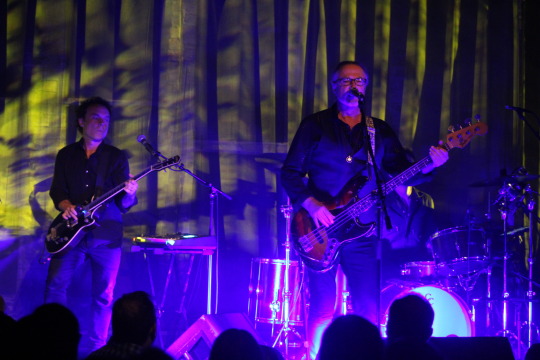
BY JORDAN MAINZER
I'll admit it: Thought I admire both their underrated back catalog and new concept album The Hypnogogue (Communicating Vessels), having never seen The Church, I was wary of Steve Kilbey's ability to weave AI-inspired futuristic concepts into the shimmery wistfulness of the band's old songs. Maybe this was the result of having spent so much time recently trying to place myself in the mind of another overly ambitious rock icon. And perhaps my thoughts were unfair considering The Hypnogogue is a cohesive-sounding front-to-back album, stellar independent of its story. But a part of me was nonetheless skeptical of the juxtaposition of heady slow burns with dream pop classics.
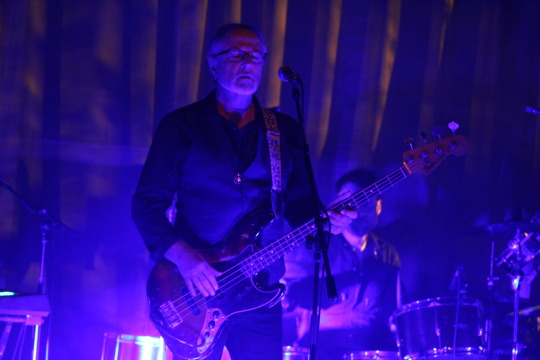
Well, immediately after finishing the building "Ascendence", Ian Haug and Ashley Naylor's siren-like guitars leading the way, Kilbey declared that the Australian band was "playing better than ever before," 26 gigs in a row be damned. Indeed, they were so fine-tuned--his perfectly yearning vocals on "Destination", touring drummer Nicholas Meredith's disco beat breakdown on "Metropolis"--that by the time he introduced the concept of The Hypnogogue on ballad "No Other You", you were too, well, hypnotized, by the stadium sounds emanating from a small stage, to take in the plot. Kilbey contextualized The Hypnagogue's songs within the album's universe whenever he introduced them, but he did so non-linearly, as if each song was its own vignette. "Flickering Lights" sees the narrator hearing a nostalgic song in a cab, represented live by Jeffrey Cain's washy synths and Haug and Naylor's chiming guitars. "Antarctica", meanwhile, is named after the motherland of the main character, and the band's Pink Floyd-like, deliberate, effects-heavy prog funk conjured the feeling of being so cold you can't think straight. "Albert Ross"'s namesake in the fictional world is a disappeared guitar tech, and what better way to pay tribute to the lost soul than for Kilbey to thank the band's road crew, especially because they had to bring a mandolin just for that song?
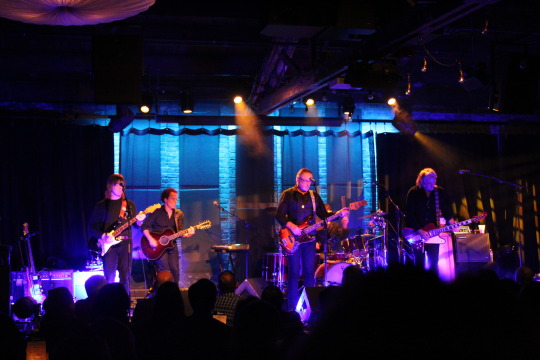
Of course, The Church's hits were highlights, from "Hotel Womb" and "Fly", both enveloped by voluminous synths, to a lounge-like version of "Under the Milky Way" and stomping "Grind". But I was blown away by many of their deep cuts. During a mid-concert mini acoustic set, they nailed "Old Coast Road", a gorgeously jangly highlight from 2014's Further/Deeper. Meredith's motorik drumming both propelled and offered a welcome contrast to the otherwise beatific "C'est La Vie". Kilbey's dry, spoken delivery on "Second Bridge" recalled the depth of Jarvis Cocker. And "Tantalized", sans the theatrical horns of its studio version, was a tried and true monochromatic banger, clattering drums and scratchy, early 80's-The Edge-like guitars splitting eardrums in a venue over four times smaller than the theaters The Church were playing earlier in the year.
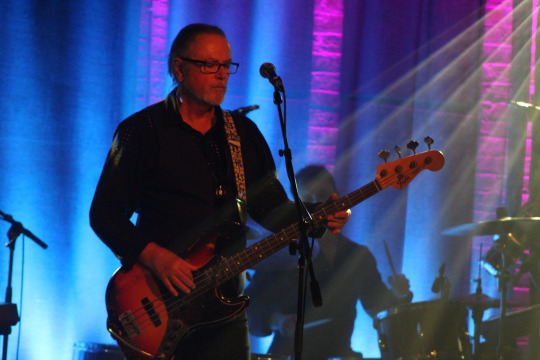
Ask any casual music fan about The Church, and they'll think of the band who made "Under the Milky Way". It is a great song; the moment the synthetic guitar solo meant to sound like bagpipes comes in, is one of the greatest in 80's rock. I posit, though, that their best song is "Reptile", whose revolving Marty Willson-Piper riff is the earworm of all earworms. This lineup, along with appropriate green and orange strobe lighting, stuck the landing, the dual guitar interplay shining in a matchup of stop-start stabs behind Kilbey's whispered sneer of a vocal turn. It was the emotional climax of the show, prepping you for the all-out closing cacophony jam of "You Took", and one that reminded you that a band in their fifth decade sounds like they could share a stage with some of today's best post-punk bands, even if their sound is meant to evoke noises of the past.

#live music#the church#space#communicating vessels#steve kilbey#ian haug#nicholas meredith#the hypnogogue#evanston space#ashley naylor#jeffrey cain#pink floyd#Further/Deeper#jarvis cocker#the edge#Marty Willson-Piper
1 note
·
View note
Text
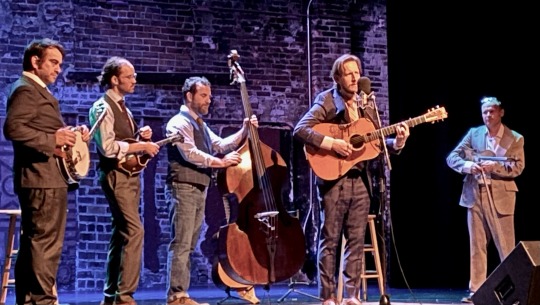
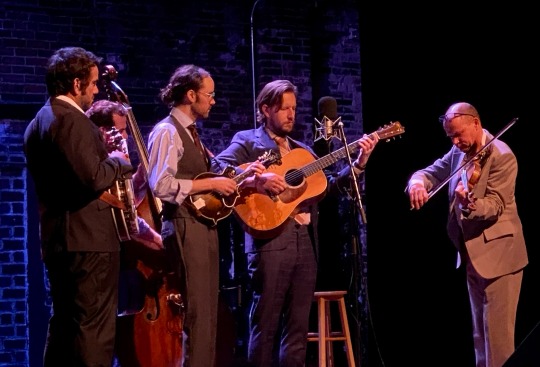
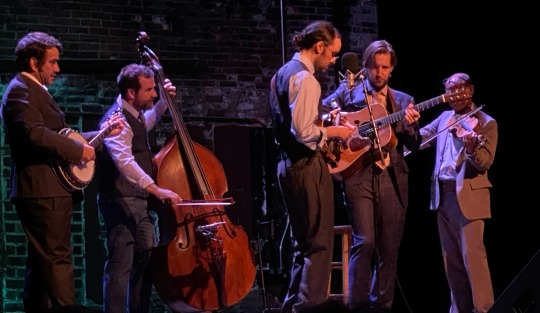

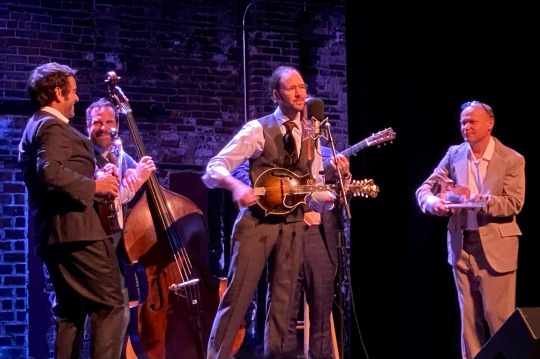

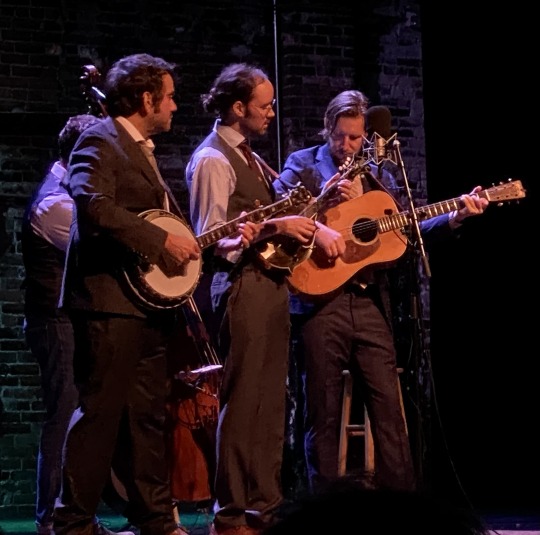
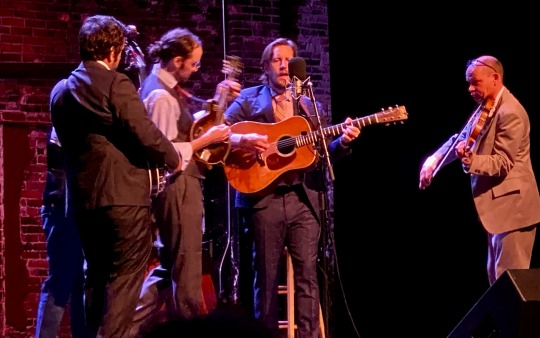
Mighty Poplar at Stuart’s Opera House, Nelsonville, Ohio, Sept. 17, 2023
They come from non-traditional places. But when they come together as Mighty Poplar, members of Watchhouse, Punch Brothers and Leftover Salmon embrace bluegrass tradition head on.
Dressed for an office environment but playing for a front porch Sept. 17 at a sold-out Stuart’s Opera House in Nelsonville, Ohio, Watchouse’s Andrew Marlin (mandolin/acoustic guitar), Punch Brothers Chris Eldridge (acoustic guitar/mandolin) and Noam Pikelny (banjo) and Leftover Salmon’s Greg Garrison (bass) were joined by Shad Cobb (who filled in for Billy Strings fiddler Alex Hargreaves) to offer songs from their self-titled debut alongside other covers (“Little Sadie”) and self-written tracks, including the rapid-fire instrumental “Man Chicken,” which Pikelny facetiously introduced as his attempt to communicate heavy thoughts to his parents.
When the band stumbled over the intro and into a false start, the laconic banjoist blamed the emotion of the decidedly playful number.
Unplugged and amplified only with a single mic, Mighty Poplar epitomized band camaraderie, smiling, cuing one another for solos and playing with the precision of a single instrumentalist. Cobb was so fully integrated, he shared harmony vocals with the entire group and lead vocals with Marlin and Eldridge.
Walking onstage casually at 7:25 p.m., the nattily attired band eased into the show in a slow build as Marlin and Eldridge lay a soft foundation that was eventually cemented by Garrison. Once it had firmed up, Pikelny, then Cobb, chimed in and the music began ascending the first of many mountains of tension before sliding down a slope of release. The audience, fully engaged and seeming to think this Sunday was a Saturday night, enthusiastically cheered the band and individual passages. It erupted in a standing ovation when the show concluded one-and-three-quarters-hours later.
Along the way, Mighty Poplar nodded to the Carter Family on “A Distant Land to Roam,” Bob Dylan with “North Country Blues,” Leonard Cohen’s “Story of Isaac,” John Hartford with “Let Him Go on, Mama” and Bill Monroe with “The Old Mountaineer.” At turns raucous, balladic, celebratory and melancholic, the songs’ diversity was matched by the band’s ability to inhabit them, confirming Mighty Poplar’s status as the rare supergroup that lives up to the superlative.
Grade card: Mighty Poplar at Stuart’s Opera House - 9/17/23 - A
9/18/23
#mighty poplar#2023 concerts#andrew marlin#mandolin orange#watchhouse#noam pikelny#chris eldridge#punch brothers#greg garrison#leftover salmon#alex hargreaves#billy strings#shad cobb#leonard cohen#bob dylan#the carter family#bill monroe#john hartford
0 notes
Quote
Mahler – Symphony no. 7 in e minor Now that the sun is setting, I can talk about Mahler’s weirdest symphony. The 7th is a bit of a tough nut to crack at first, but if we focus on the subtitle given to it “Song of the Night”, then I think it’s easier to understand the structure. This symphony has gotten the most criticism out of his output, and is considered confusing and weird, with the two book end movements sticking out like sore thumbs. I have my own theory as to how to “interpret” the work. (and it’s just my personal idea so don’t take it to be a well based fact or anything. I mean for real, Mahler wouldn’t approve of me adding all this extra-musical program to one of his absolute symphonies) I like to think of it as depicting the different emotions and evocations that nighttime has in our culture, and each movement corresponds to a different period of time. The first movement, 6 pm, Twilight to Dusk, just as the sun slips away beyond the horizon we are thrown into the beginning of the long darkness of night. Here we get a mix of emotions, arousal at the idea of having fun, going out with friends, maybe meeting someone to spend the night with, but also an anxiety creeps up on you, at the dangers lurking at night. Criminals. Living in the city I always hold this anxiety walking around after dark. The music opens with sinister chords and a deep call from the tenor horn, and the structure is confused by episodic bursts of different moods, from dramatic and almost “Star Wars” like, to the almost religious rise of the violins around the halfway point, like ascending a mountain. The movement ends on an unexpected bright note. The next movement, 9 pm, the first Nachtmusik, the actual nighttime begins. This movement makes me think of the horrors associated with night, imagine a creepy forest lit by the moon, you can barely see, it’s cold, and there are all kinds of animals, potential monsters, lurking in the darkness. That’s what I think of. The combination of fear and excitement at the sublime and almost surreal nature of the earth at night. The music opens with evocative horns calling and answering each other. The winds flutter in sounding like nocturnal birds, or the wind, as the horns repeat their calls, and you can feel the darkness of the soundscape take over. But it isn’t sinister for long, as a more playful and less unnerving waltz comes in. The third movement, Midnight, is the beginning of the Midnight Hour leading into the Witching Hour. The time of night that is most scary, that the world is uneasily quiet, and that even skeptics like me tremble at the thought of some kind of evil thing waiting to prey on me. This movement plays like a Viennese waltz, but the dancers are corpses. Yes, this is Mahler’s Danse Macabre, and as the waltz plays on with spooky sonorities, it sounds as if the music itself is decaying. The fourth movement, 4am, the second Nachtmusik. The chilling terrors of the night have begun to pass. This to me is depicting the calmness of night, the serenity of the silence and the dark, how peaceful most of us feel asleep in beds, cows asleep in their fields, the moon is bright and lighting up the sky, and dawn is approaching, the sky is turning a brighter shade gradually. The orchestra is toned down severely, most of the brass and woodwinds take a break, and so the instrumentation is almost like a concerto for several solo instruments, like a call back to the Baroque era. The use of mandolins and guitars to add to the texture, along with the subtitle “amaroso”, makes this feel like a serenade. Love songs sung under the moon, sweet words to calm the mind after dark. The passionate aspect of nighttime. The final movement, 6 am, the moment the sun rises, isn’t a gradual build up. Instead, the timpani and brass breaks the doors blaring a triumphant song, so uncharacteristic of the rest of the work, it leaves people scratching their heads. I think of it as the sun rising, the light concurring the evil of the night, and bringing us another day, bringing us warmth. However, the fanfare and melodies feel sarcastic. They’re banal, and the overinflated orchestra feels like a cheap trick, like a composer who is trying to make a “grand finale”. This movement is a parody, and it also parodies melodies from Wagner’s gargantuan Die Meistersinger… and Franz Lehár’s The Merry Widow. The movement is built of constantly changing variations on the opening themes, and is packed with false climaxes and let downs. Even when the melody and orchestra release their full grandeur at the end, the coda is interrupted by a hesitant and hushed chord, right before the final slap. While I get that this is more for comedic affect, [and that this movement is strange in how it is so distant from the music that came before], I like to think of the final hesitation as a reminder that, even though the sun is up, and another day is here, the darkness of night is always ahead, and the fears we have of ourselves and each other and monsters real and imaginary still live in the back of our minds, waiting for another night to come out to haunt us. Movements: 1. Langsam – Allegro risulto, ma non troppo 2. Nachtmusik I 3. Scherzo 4. Nachtmusik II 5. Rondo finale
mikrokosmos: Mahler – Symphony no. 7 in e minor Now that the sun is setting, I can talk about Mahler’s weirdest symphony. The 7th is a bit of a tough nut to crack at first, but if we focus on the subtitle given to it “Song of the Night”, then I think it’s easier to…
0 notes
Quote
Mahler – Symphony no. 7 in e minor Now that the sun is setting, I can talk about Mahler’s weirdest symphony. The 7th is a bit of a tough nut to crack at first, but if we focus on the subtitle given to it “Song of the Night”, then I think it’s easier to understand the structure. This symphony has gotten the most criticism out of his output, and is considered confusing and weird, with the two book end movements sticking out like sore thumbs. I have my own theory as to how to “interpret” the work. (and it’s just my personal idea so don’t take it to be a well based fact or anything. I mean for real, Mahler wouldn’t approve of me adding all this extra-musical program to one of his absolute symphonies) I like to think of it as depicting the different emotions and evocations that nighttime has in our culture, and each movement corresponds to a different period of time. The first movement, 6 pm, Twilight to Dusk, just as the sun slips away beyond the horizon we are thrown into the beginning of the long darkness of night. Here we get a mix of emotions, arousal at the idea of having fun, going out with friends, maybe meeting someone to spend the night with, but also an anxiety creeps up on you, at the dangers lurking at night. Criminals. Living in the city I always hold this anxiety walking around after dark. The music opens with sinister chords and a deep call from the tenor horn, and the structure is confused by episodic bursts of different moods, from dramatic and almost “Star Wars” like, to the almost religious rise of the violins around the halfway point, like ascending a mountain. The movement ends on an unexpected bright note. The next movement, 9 pm, the first Nachtmusik, the actual nighttime begins. This movement makes me think of the horrors associated with night, imagine a creepy forest lit by the moon, you can barely see, it’s cold, and there are all kinds of animals, potential monsters, lurking in the darkness. That’s what I think of. The combination of fear and excitement at the sublime and almost surreal nature of the earth at night. The music opens with evocative horns calling and answering each other. The winds flutter in sounding like nocturnal birds, or the wind, as the horns repeat their calls, and you can feel the darkness of the soundscape take over. But it isn’t sinister for long, as a more playful and less unnerving waltz comes in. The third movement, Midnight, is the beginning of the Midnight Hour leading into the Witching Hour. The time of night that is most scary, that the world is uneasily quiet, and that even skeptics like me tremble at the thought of some kind of evil thing waiting to prey on me. This movement plays like a Viennese waltz, but the dancers are corpses. Yes, this is Mahler’s Danse Macabre, and as the waltz plays on with spooky sonorities, it sounds as if the music itself is decaying. The fourth movement, 4am, the second Nachtmusik. The chilling terrors of the night have begun to pass. This to me is depicting the calmness of night, the serenity of the silence and the dark, how peaceful most of us feel asleep in beds, cows asleep in their fields, the moon is bright and lighting up the sky, and dawn is approaching, the sky is turning a brighter shade gradually. The orchestra is toned down severely, most of the brass and woodwinds take a break, and so the instrumentation is almost like a concerto for several solo instruments, like a call back to the Baroque era. The use of mandolins and guitars to add to the texture, along with the subtitle “amaroso”, makes this feel like a serenade. Love songs sung under the moon, sweet words to calm the mind after dark. The passionate aspect of nighttime. The final movement, 6 am, the moment the sun rises, isn’t a gradual build up. Instead, the timpani and brass breaks the doors blaring a triumphant song, so uncharacteristic of the rest of the work, it leaves people scratching their heads. I think of it as the sun rising, the light concurring the evil of the night, and bringing us another day, bringing us warmth. However, the fanfare and melodies feel sarcastic. They’re banal, and the overinflated orchestra feels like a cheap trick, like a composer who is trying to make a “grand finale”. This movement is a parody, and it also parodies melodies from Wagner’s gargantuan Die Meistersinger… and Franz Lehár’s The Merry Widow. The movement is built of constantly changing variations on the opening themes, and is packed with false climaxes and let downs. Even when the melody and orchestra release their full grandeur at the end, the coda is interrupted by a hesitant and hushed chord, right before the final slap. While I get that this is more for comedic affect, [and that this movement is strange in how it is so distant from the music that came before], I like to think of the final hesitation as a reminder that, even though the sun is up, and another day is here, the darkness of night is always ahead, and the fears we have of ourselves and each other and monsters real and imaginary still live in the back of our minds, waiting for another night to come out to haunt us. Movements: 1. Langsam – Allegro risulto, ma non troppo 2. Nachtmusik I 3. Scherzo 4. Nachtmusik II 5. Rondo finale
mikrokosmos: Mahler – Symphony no. 7 in e minor Now that the sun is setting, I can talk about Mahler’s weirdest symphony. The 7th is a bit of a tough nut to crack at first, but if we focus on the subtitle given to it “Song of the Night”, then I think it’s easier to…
0 notes
Quote
Mahler – Symphony no. 7 in e minor Now that the sun is setting, I can talk about Mahler’s weirdest symphony. The 7th is a bit of a tough nut to crack at first, but if we focus on the subtitle given to it “Song of the Night”, then I think it’s easier to understand the structure. This symphony has gotten the most criticism out of his output, and is considered confusing and weird, with the two book end movements sticking out like sore thumbs. I have my own theory as to how to “interpret” the work. (and it’s just my personal idea so don’t take it to be a well based fact or anything. I mean for real, Mahler wouldn’t approve of me adding all this extra-musical program to one of his absolute symphonies) I like to think of it as depicting the different emotions and evocations that nighttime has in our culture, and each movement corresponds to a different period of time. The first movement, 6 pm, Twilight to Dusk, just as the sun slips away beyond the horizon we are thrown into the beginning of the long darkness of night. Here we get a mix of emotions, arousal at the idea of having fun, going out with friends, maybe meeting someone to spend the night with, but also an anxiety creeps up on you, at the dangers lurking at night. Criminals. Living in the city I always hold this anxiety walking around after dark. The music opens with sinister chords and a deep call from the tenor horn, and the structure is confused by episodic bursts of different moods, from dramatic and almost “Star Wars” like, to the almost religious rise of the violins around the halfway point, like ascending a mountain. The movement ends on an unexpected bright note. The next movement, 9 pm, the first Nachtmusik, the actual nighttime begins. This movement makes me think of the horrors associated with night, imagine a creepy forest lit by the moon, you can barely see, it’s cold, and there are all kinds of animals, potential monsters, lurking in the darkness. That’s what I think of. The combination of fear and excitement at the sublime and almost surreal nature of the earth at night. The music opens with evocative horns calling and answering each other. The winds flutter in sounding like nocturnal birds, or the wind, as the horns repeat their calls, and you can feel the darkness of the soundscape take over. But it isn’t sinister for long, as a more playful and less unnerving waltz comes in. The third movement, Midnight, is the beginning of the Midnight Hour leading into the Witching Hour. The time of night that is most scary, that the world is uneasily quiet, and that even skeptics like me tremble at the thought of some kind of evil thing waiting to prey on me. This movement plays like a Viennese waltz, but the dancers are corpses. Yes, this is Mahler’s Danse Macabre, and as the waltz plays on with spooky sonorities, it sounds as if the music itself is decaying. The fourth movement, 4am, the second Nachtmusik. The chilling terrors of the night have begun to pass. This to me is depicting the calmness of night, the serenity of the silence and the dark, how peaceful most of us feel asleep in beds, cows asleep in their fields, the moon is bright and lighting up the sky, and dawn is approaching, the sky is turning a brighter shade gradually. The orchestra is toned down severely, most of the brass and woodwinds take a break, and so the instrumentation is almost like a concerto for several solo instruments, like a call back to the Baroque era. The use of mandolins and guitars to add to the texture, along with the subtitle “amaroso”, makes this feel like a serenade. Love songs sung under the moon, sweet words to calm the mind after dark. The passionate aspect of nighttime. The final movement, 6 am, the moment the sun rises, isn’t a gradual build up. Instead, the timpani and brass breaks the doors blaring a triumphant song, so uncharacteristic of the rest of the work, it leaves people scratching their heads. I think of it as the sun rising, the light concurring the evil of the night, and bringing us another day, bringing us warmth. However, the fanfare and melodies feel sarcastic. They’re banal, and the overinflated orchestra feels like a cheap trick, like a composer who is trying to make a “grand finale”. This movement is a parody, and it also parodies melodies from Wagner’s gargantuan Die Meistersinger… and Franz Lehár’s The Merry Widow. The movement is built of constantly changing variations on the opening themes, and is packed with false climaxes and let downs. Even when the melody and orchestra release their full grandeur at the end, the coda is interrupted by a hesitant and hushed chord, right before the final slap. While I get that this is more for comedic affect, [and that this movement is strange in how it is so distant from the music that came before], I like to think of the final hesitation as a reminder that, even though the sun is up, and another day is here, the darkness of night is always ahead, and the fears we have of ourselves and each other and monsters real and imaginary still live in the back of our minds, waiting for another night to come out to haunt us. Movements: 1. Langsam – Allegro risulto, ma non troppo 2. Nachtmusik I 3. Scherzo 4. Nachtmusik II 5. Rondo finale
mikrokosmos: Mahler – Symphony no. 7 in e minor Now that the sun is setting, I can talk about Mahler’s weirdest symphony. The 7th is a bit of a tough nut to crack at first, but if we focus on the subtitle given to it “Song of the Night”, then I think it’s easier to…
0 notes
Quote
Mahler – Symphony no. 7 in e minor Now that the sun is setting, I can talk about Mahler’s weirdest symphony. The 7th is a bit of a tough nut to crack at first, but if we focus on the subtitle given to it “Song of the Night”, then I think it’s easier to understand the structure. This symphony has gotten the most criticism out of his output, and is considered confusing and weird, with the two book end movements sticking out like sore thumbs. I have my own theory as to how to “interpret” the work. (and it’s just my personal idea so don’t take it to be a well based fact or anything. I mean for real, Mahler wouldn’t approve of me adding all this extra-musical program to one of his absolute symphonies) I like to think of it as depicting the different emotions and evocations that nighttime has in our culture, and each movement corresponds to a different period of time. The first movement, 6 pm, Twilight to Dusk, just as the sun slips away beyond the horizon we are thrown into the beginning of the long darkness of night. Here we get a mix of emotions, arousal at the idea of having fun, going out with friends, maybe meeting someone to spend the night with, but also an anxiety creeps up on you, at the dangers lurking at night. Criminals. Living in the city I always hold this anxiety walking around after dark. The music opens with sinister chords and a deep call from the tenor horn, and the structure is confused by episodic bursts of different moods, from dramatic and almost “Star Wars” like, to the almost religious rise of the violins around the halfway point, like ascending a mountain. The movement ends on an unexpected bright note. The next movement, 9 pm, the first Nachtmusik, the actual nighttime begins. This movement makes me think of the horrors associated with night, imagine a creepy forest lit by the moon, you can barely see, it’s cold, and there are all kinds of animals, potential monsters, lurking in the darkness. That’s what I think of. The combination of fear and excitement at the sublime and almost surreal nature of the earth at night. The music opens with evocative horns calling and answering each other. The winds flutter in sounding like nocturnal birds, or the wind, as the horns repeat their calls, and you can feel the darkness of the soundscape take over. But it isn’t sinister for long, as a more playful and less unnerving waltz comes in. The third movement, Midnight, is the beginning of the Midnight Hour leading into the Witching Hour. The time of night that is most scary, that the world is uneasily quiet, and that even skeptics like me tremble at the thought of some kind of evil thing waiting to prey on me. This movement plays like a Viennese waltz, but the dancers are corpses. Yes, this is Mahler’s Danse Macabre, and as the waltz plays on with spooky sonorities, it sounds as if the music itself is decaying. The fourth movement, 4am, the second Nachtmusik. The chilling terrors of the night have begun to pass. This to me is depicting the calmness of night, the serenity of the silence and the dark, how peaceful most of us feel asleep in beds, cows asleep in their fields, the moon is bright and lighting up the sky, and dawn is approaching, the sky is turning a brighter shade gradually. The orchestra is toned down severely, most of the brass and woodwinds take a break, and so the instrumentation is almost like a concerto for several solo instruments, like a call back to the Baroque era. The use of mandolins and guitars to add to the texture, along with the subtitle “amaroso”, makes this feel like a serenade. Love songs sung under the moon, sweet words to calm the mind after dark. The passionate aspect of nighttime. The final movement, 6 am, the moment the sun rises, isn’t a gradual build up. Instead, the timpani and brass breaks the doors blaring a triumphant song, so uncharacteristic of the rest of the work, it leaves people scratching their heads. I think of it as the sun rising, the light concurring the evil of the night, and bringing us another day, bringing us warmth. However, the fanfare and melodies feel sarcastic. They’re banal, and the overinflated orchestra feels like a cheap trick, like a composer who is trying to make a “grand finale”. This movement is a parody, and it also parodies melodies from Wagner’s gargantuan Die Meistersinger… and Franz Lehár’s The Merry Widow. The movement is built of constantly changing variations on the opening themes, and is packed with false climaxes and let downs. Even when the melody and orchestra release their full grandeur at the end, the coda is interrupted by a hesitant and hushed chord, right before the final slap. While I get that this is more for comedic affect, [and that this movement is strange in how it is so distant from the music that came before], I like to think of the final hesitation as a reminder that, even though the sun is up, and another day is here, the darkness of night is always ahead, and the fears we have of ourselves and each other and monsters real and imaginary still live in the back of our minds, waiting for another night to come out to haunt us. Movements: 1. Langsam – Allegro risulto, ma non troppo 2. Nachtmusik I 3. Scherzo 4. Nachtmusik II 5. Rondo finale
mikrokosmos: Mahler – Symphony no. 7 in e minor Now that the sun is setting, I can talk about Mahler’s weirdest symphony. The 7th is a bit of a tough nut to crack at first, but if we focus on the subtitle given to it “Song of the Night”, then I think it’s easier to…
0 notes
Text
The Hard Life of Brian: Brian May
By Ian Fortnam, unpublished, April 1998
It's quite a spread – set in the majestic, green sward Jerusalem of the Home Counties' stockbroker belt, and surrounded by idyllic gardens painstakingly landscaped a little over a century ago by Kew's leading horticulturalist.
The architectural opulence is quite simply breathtaking, unpretentious yet quietly exuding an authoritative aura of immeasurable affluence. With wealth and celebrity comes the acquisition of such pastoral pleasures. Unsullied tranquillity, precious time to reflect on past achievements and, not least, limitless solitude.
Indeed, as countless recipients of those elusive "big money balls" will undoubtedly find, to their eternal cost, an ivory tower can swiftly metamorphose into an impenetrable cell for the soul. Behind the glitz and glamour associated with our celebrated host – and the proud owner of the careworn white clogs temporarily abandoned in Utopia's sumptuous porch – is a tangible melancholia. In fact, Brian 'Tie Your Mother Down' May is the living, breathing personification of that age-old glam rock dictum: In every dream home a heartache.
As Brian, simultaneously soft-spoken and garrulous, reminisces over his remarkable career; formative gigs on the late-'60s psychedelic underground circuit, the fifteen year ascendancy of Queen from the Wadebridge Young Farmers Club to the unassailable spectacle of their '86 live finale at Knebworth Park, and ultimately, as a solo standard-bearer for Queen's timeless legacy of baroque über-rock, he occasionally touches on the tenacious inner demons which can mercilessly torment a gentleman rock star whilst ensconced in the confines of his country retreat.
"Because my partner (former Eastenders actress, Anita Dobson) is not able to live my life, and I'm not able to live hers, I'm on my own a lot of the time," admits Brian, clutching his ever-present, six-stringed security blanket.
"During the day it's buzzing. Everyone's around – music's happening in the studio, the builders and the gardeners are here – but at night everyone goes away and it's just me. And sometimes I have a problem with that. Sometimes I find it quite difficult. I cling to things like, I'll always make my bed when I get up, because I don't want the feeling when I go to bed that no one's been in there since morning. Strange things like that. I also leave the light on, so that when I go into the bedroom at night it doesn't feel cold. It's not as if I'm scared of the dark, but it's an icy feeling which can grab your heart and say; 'Nobody loves me. After all this time, here I am on my own'."
*
On 19th of July, 1954, Brian May's seventh birthday, he received an acoustic guitar and – enthralled by the recordings of such artists as jazz legend, Django Reinhardt and celebrated Elvis Presley and Jim Reeves sideman Chet Atkins – set about duplicating their chops. However, with the dawn of the 1960s, Brian had succumbed to the charms of solid-bodied rock guitar with an evangelical fervour, firstly by way of obscure Rick Nelson records, but most tellingly, on witnessing Jeff Beck live at the Marquee, and was overwhelmed by an irresistible compulsion to get amplified. There was, however, one seemingly insurmountable obstacle in his path.
"We didn't really have any money, we were really close to the breadline. My mother used to secrete sixpences in jars to try and pay the gas bill."
Happily, what the Mays lacked in finance they more than made up for in ingenuity.
"I played around with my acoustic guitar and figured out how to make a pick-up with magnets and wire, plugged the wires into my dad's radio, and it sounded brilliant. Really amazing. We made everything, my dad and me. My dad was particularly amazing at turning his hand to every kind of craft. He was an electronics draftsman by trade, so he made our radio. We had the first TV in the street, because he made it. We couldn't afford a guitar, so we figured we'd make one."
And so, in August 1963, work began on what became known as 'The Red Special', the most famous homemade guitar in rock history. With a neck fashioned with a penknife from a woodworm-riddled mahogany fireplace, and a body constructed from odds and ends of oak, the guitar cost just £8 to construct, yet its unique fluid warmth of tone has graced every recording and show that Brian has ever played. Yet as we speak, Brian's pride and joy lies in pieces on a nearby workbench. After a thirty-year tour of duty, the battle-scarred 'Red Special' is finally undergoing a belated overhaul.
It was only after three exact replicas were painstakingly constructed over an eighteen-month period that permission was finally granted to disassemble the singular instrument. And when its heavily dented body was cautiously prised apart, its internal acoustic pockets were found to be entirely clogged with innumerable shards of silver. A bizarre condition, symptomatic of the fact that Brian May's plectrum of choice has always been the shiny, pre-decimal sixpence.
From the very beginning Brian May has been reaching for the stars. Literally. With an enthusiasm kindled by the works of Patrick Moore, he would spend moonless nights gazing toward the heavens through a (somewhat predictably) homemade telescope, and at the age of 18 was successful in his application to study physics and infrared astronomy at Imperial College, London. Three years later, in 1968, he received his Bachelor of Science degree from the Queen Mother. But, by now, Brian's passion for music was all-encompassing and, despite being offered a prestigious research position at Jodrell Bank, he abandoned astronomy for rock 'n' roll. It was a decision that was to cause a major rift within the May household.
"My dad always dreamed that I would get what he regarded as a proper job. A respectable job. So I would be able to do things for my family, that he hadn't been able to do for his. He regarded it as the ultimate form of blasphemy. It was the worst thing he could imagine. He just couldn't compute it, and we actually had a terrible time. We hardly spoke for about a year and a half. But it ended happily, because the first time Queen played at Madison Square Garden, I flew my parents over on Concorde, stuck them in the Waldorf Astoria and said, 'Order yourself some room service'. They came to the gig and they loved it. And my dad said: 'Yeah, I understand now.' It was a really nice moment."
During his years at Imperial, Brian had been playing in his first band, 1984. Fully immersed in the capital's psychedelic underground, the band rapidly found themselves supporting the likes of Jimi Hendrix and Tyrannosaurus Rex.
"They were prestigious gigs, but we were lower than the bottom of the bill. I had this funny little group, which was put together at school, and a couple of would-be managers took us down to Carnaby Street and bought us all the gear. They put us on at Christmas On Earth (an all-night psychedelic "happening" that took place at London's Olympia in December '67), which was very cool. I remember plugging into the same stack that Jimi Hendrix had plugged into. It sounded like the whole world when he played through it. For me, it sounded like a transistor radio.
"It felt like we were at the beginning of creation. Suddenly, all around us, people were discovering what happened when you turned a guitar up to max and it had a life of its own. It became a completely different instrument and the fact that it went with all the psychedelia, drug culture and peace and love was very exciting for me. It all sounds really corny now, but it was so new and dangerous then that it was just wonderful to be a part of it.
"I never took the drugs. I wanted to be sure that everything I experienced was real. I didn't want to disentangle what was drug-induced and what wasn't. I just got very high on the music. I was supposed to be at college, but we were playing and going out to see people like Pink Floyd, Cream, The Who, Hendrix. You could see all those people in one week. Can you imagine? We never slept."
*
OVER THE NEXT COUPLE of years, 1984 metamorphosed into Smile, and ultimately, into Queen. But when Brian and newly recruited drummer Roger Taylor were initially approached by Ealing art student Freddie Bulsara, they were none to keen to utilise his vocal talents.
"We didn't think he had any vocal talents at the beginning. We thought that he was just all talk. He was very flamboyant and very arrogant, in a rather nice way. But then we started to go round to each other's houses and share our dreams, I suppose."
With Freddie, now boasting the charismatic appellation Mercury, firmly ensconced in the band, they set about conquering the world. But the vocalist's singular dress sense was always a cause of some consternation within the Queen ranks.
"It was a source of great amusement and embarrassment for us, especially what we call the prawn outfit in the video for 'It's A Hard Life'. But it was Freddie, you know, and we all have our quirks and indulgences. I think the first time we saw the red and silver glitter outfit we were kind of dubious. But there wasn't anything he wouldn't do, and the more you were shocked at what he did, the more he loved it. He had great love and respect for his parents, but if they came to a gig, he would do things which were in questionable taste to make them feel uneasy. I think he had a great desire not to be fettered, and it taught me a lot."
To many, Queen's greatest sonic legacy was their epic 1975 single 'Bohemian Rhapsody'.
"We viewed it quite tongue-in-cheek, it was mock-opera, and such a step into the unknown that it kind of made us smile. It was meant to be that way. The video was done incredibly cheaply, and again quite tongue-in-cheek, and when we saw it we all had a good laugh. We were all surprised at how seriously people took it, to be honest."
As the years progressed, Queen came to exemplify rock excess in all its forms. Their parties have since passed into legend. Five-day bashes with attendant capering dwarves and, on one infamous occasion, a nude model in a bath of raw liver. Yet as the revellers immersed themselves in behaviour of a distinctly Caligulan nature, for Brian, it was simply a case of another dream home, another heartache.
"New Orleans was pretty excessive, but whatever you're in at the time is your own personal heaven or hell. I remember I was really sad at that party. Cos I'd fallen in love some years before in New Orleans and I expected that I would see her, but she wasn't there. So, you know that feeling, where everything's going on, everything's wonderful, fabulous, marvellous, but inside there's this big hole? So it was great, it was outrageous, but I remember thinking, all is not quite right.
"Over the years, there were some strange things that went on. The Kensington Roof Gardens was pretty strange. There were naked people there with their clothes painted on and some pretty bizarre stuff occurred. But, y'know, nobody got hurt."
With Freddie Mercury's tragic AIDS-related death in November 1991, Queen effectively ceased to exist. "In retrospect, I think my great consolation is that we never went downhill or became a pale imitation of our former selves. Things were still getting bigger and more exciting. The last tour we did, in '86, was the most massive thing that we'd ever undertaken."
The last album the band recorded together, Made In Heaven, was released in 1995. And its final track, 'It's A Beautiful Day', features a brief excerpt of Queen's first hit 'Seven Seas Of Rhye' in its triumphal coda. For Brian it was a final gesture to close the circle.
"I was really proud of that, actually. Even then we were breaking new ground, we'd never done anything like that. So to the last we were crossing over boundaries. We did do a little revisit. I had a track called 'No One But You', which was about Freddie, and it became a Queen song as part of the Rocks album. But the truth is that it reminded me that really I'm happier doing what I do now. I like being the way I am. I like the people I'm working with. In a way it's a liberating thing. I don't have to be Queen anymore. In some ways, although I have great sadness about it, it’s a relief."
Brian initially embarked on a solo career in 1991, when he was asked to write the music for a Ford commercial. 'Driven By You' reached number 6 in the UK singles chart and earned Brian his first Ivor Novello Award. His subsequent debut album Back To The Light went on to sell a million, and the Brian May Band hit the road, supporting Guns 'N Roses, in '93.
May's second solo offering, Another World, set for release this month, has been three years in the making and finds the infrared astronomer on star-scraping form. Sandwiched between the all-out metal holocaust of 'Business' and the acoustic introspection of the title track, Brian pays tribute to a number of his musical heroes. Not only with covers of Larry Williams' 'Slow Down', Hendrix's 'One Rainy Wish' and Mott The Hoople's 'All The Way From Memphis', but also with 'The Guv'nor', a self-penned tribute to Jeff Beck, on which the master himself makes a rare guest appearance.
"I consider myself very fortunate that he's a friend of mine now, because he was and is a hero. Not just because he plays so miraculously, but because of his whole approach to life. He doesn't make any compromises. He's magic, and whenever he picks up a guitar, I don't wanna have a guitar in my hand."
With gigs in place and the band positively itching to retread the boards after a protracted lay-off, disaster struck when Brian's close friend and sparring partner, drum legend Cozy Powell, was tragically killed in a car crash on April 5th.
"I cannot believe that we're sitting here now and he's not around. Cozy was so much part of my life. He was the most supportive friend you could ever imagine. I just can't really seem to comprehend that he's gone. He's all over the album. His power and his enthusiasm, his sense of humour. He was a magnificent bloke, and this is not false. I said it to his face; I think he knew how much I thought of him. He was a hero of mine, and when I first met him it was a dream of mine that I would play with him one day.
"He was like family, he really was. On the road, we had a fantastic time, we toured for a year, and it was a wonderful time in my life. I was probably struggling to get out of that whole sorrow about Queen and everything, I'd lost my dad and my marriage had broken up and I was actually really in pain, and having a hard time trying to pull myself back together and those guys, of which Cozy was the centre, made me have the confidence to get up and lead a band."
*
AS BRIAN TICKLES THE fretboard of his replica red special and stretches his extensive frame across a sumptuous chaise longue in the drawing room of his fabulous country mansion, does he consider that he's led something of a charmed life?
"Yeah, I have a lot to be thankful for. But the person you are is very much what goes on in your own head. So I'm probably very ungrateful, because I've been able to do things that most people would only dream of doing. But you always live in the moment, and the moment can be very cruel. And I've spent a long, long time really battling against being depressed for various reasons. It really doesn't matter what your material circumstances are. If you're unable to move forward in your personal life as you perceive it, then you can get very depressed. And that's not, like, miserable. Depression is a sort of illness which can get you, and I sort of drift in and out of it. I try not to drift back into it, but a lot of the time I suppose I do get too introspective."
The hard life of Brian: a kind of magic, undoubtedly, but more than enough to drive you ever so slightly mad.
Loves of My Life: Those Brian May collections in full:
Striding around the sumptuous confines of the May domicile it immediately becomes starkly apparent that the big-haired maestro is entirely addicted to the acquisition of certain bizarre artefacts. Specifically:
Limited edition plates
As seen in the back pages of the Sunday supplements. They're all here: the robin on the log, the News Of The World Tutankhamun collection, vintage vehicles, and hey, what's this? A Brian May plate. And it's signed!
VOX AC30 amplifiers
A veritable forest of the valve-driven little blighters. They line the walls of the hall, the baronial hall, and very probably, the royal wee. Every colour, every model, and all, characteristically, up to 11.
Vintage Dan Dare toys
In glass cases, no less. Our astronomically inclined host obviously feels an irresistible affinity with the intrepid, granite-jawed pilot of the future. But what's this over here? Wa-hey, Star Wars! All together now: Flash! WO-OH!!!
Stereo Pictures of the 1850s
Second only to Brian's well-documented lust for volume is his unquenchable passion for photography. But not any old snap-snap, grin-grin detritus, we're talking the real deal. Duplicate images from the Victorian age, best viewed through a cumbersome contraption straight out of Heath Robinson. David Bailey? Pish. Charles Piazzi-Smythe, now there's a photographer.
Harold May's tool kit
You never know when they'll come in handy. Greg, the meticulous, antipodean guitar-maker commissioned to rebuild the legendary 'red special' was astonished to find that Brian had retained all of the original apparatus he and his father had used way back in 1963. Screwdrivers, penknives, fret saws, even the original tins of wood-stain.
Brian May rag dolls
Gangly, cloth doppelgangers with intricately embroidered clogs. The fans send them. What can you do?
* Writer for NME, VOX, KERRANG and other publications, Ian has covered the recent alternative and hard-rock scenes extensively.
Retrieved from rocksbackpages.com
#so i found this but couldn't really find any more info on this article online but I'm screaming crying throwing up#'nobody loves me. after all this time here i am on my own' noooooooo :(((((((#idk why this is unpublished or if this is even credible but I'm going to believe it is until proven otherwise#bri#brian may#article#interview#1998#another world#queen band
67 notes
·
View notes